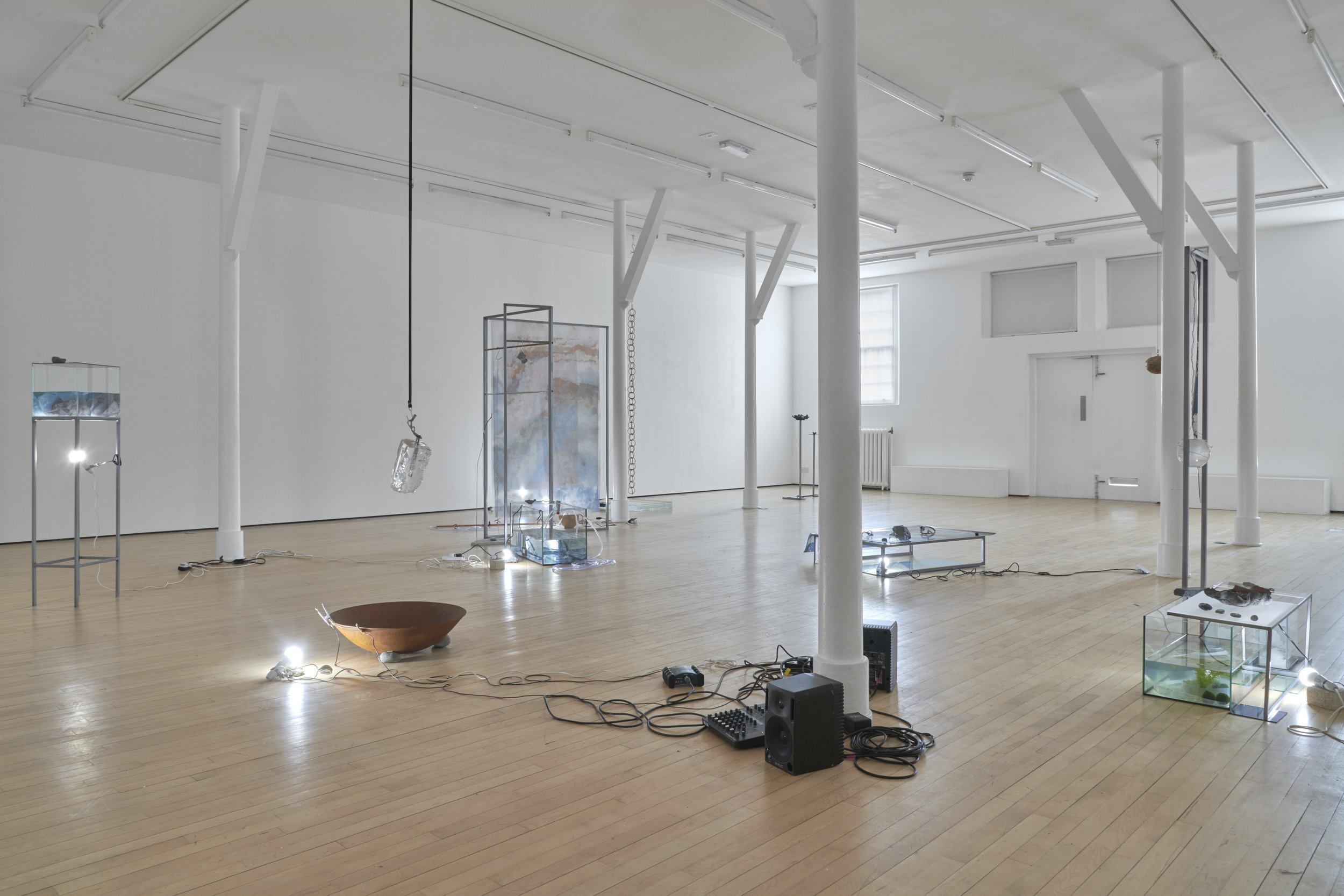
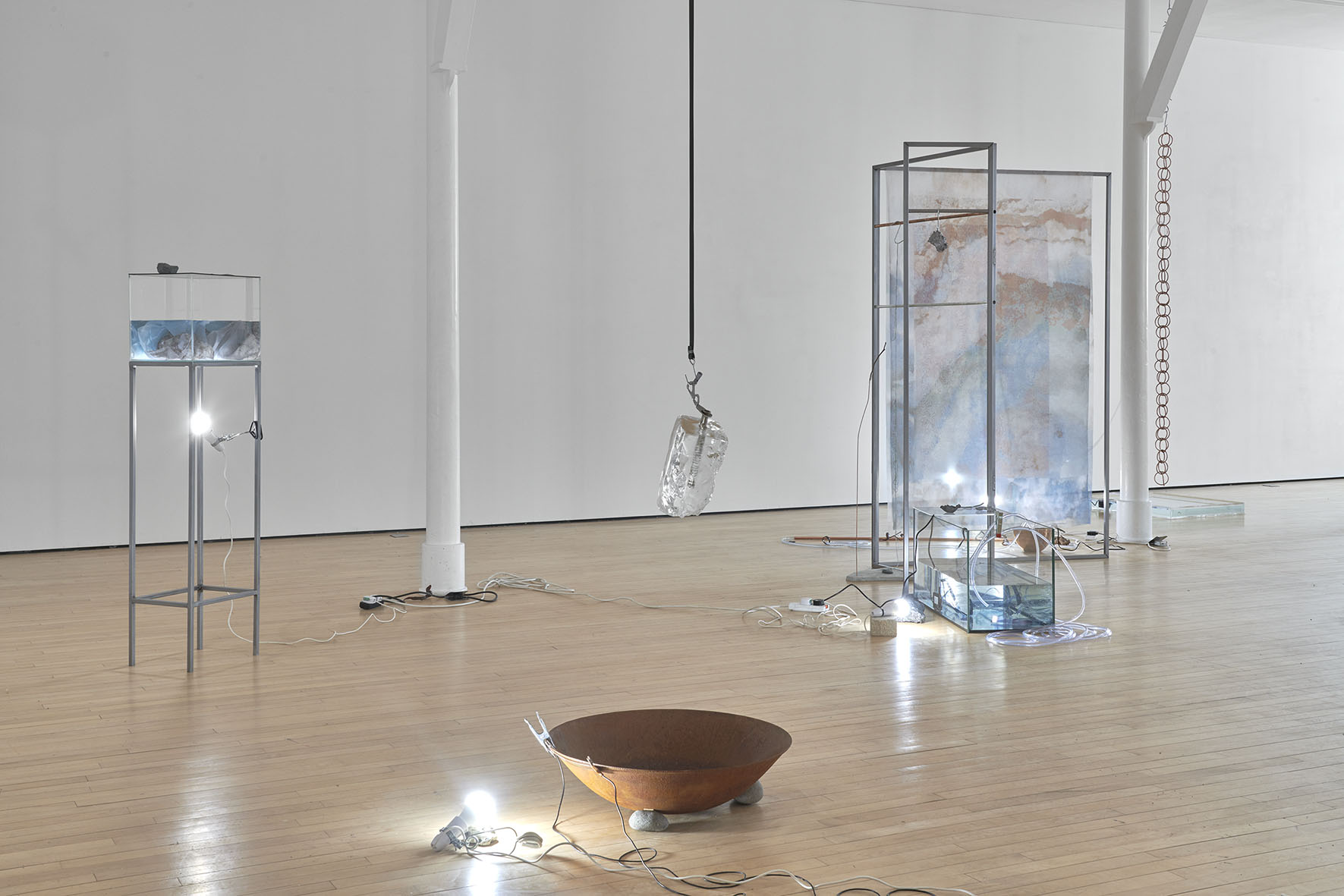
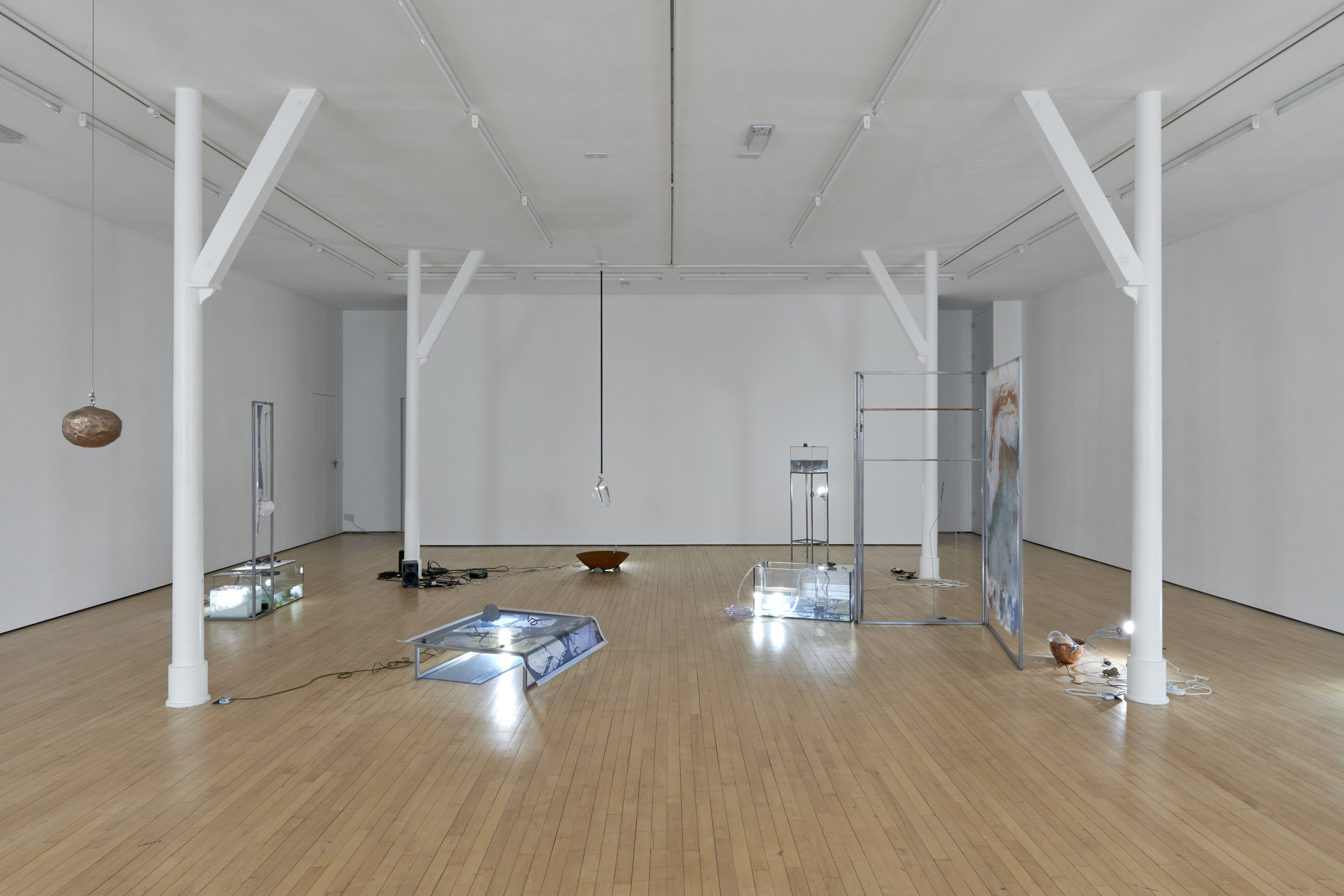
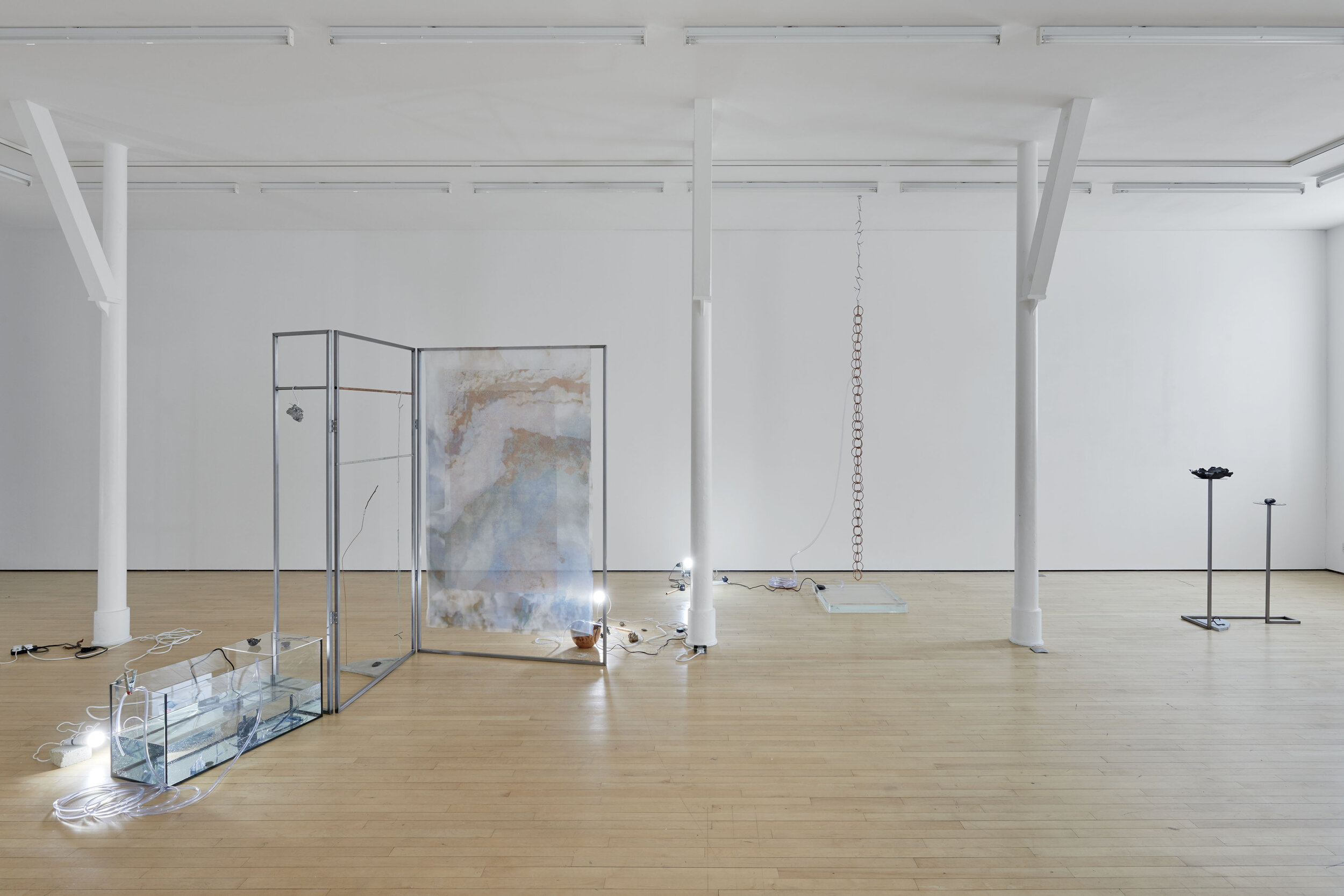
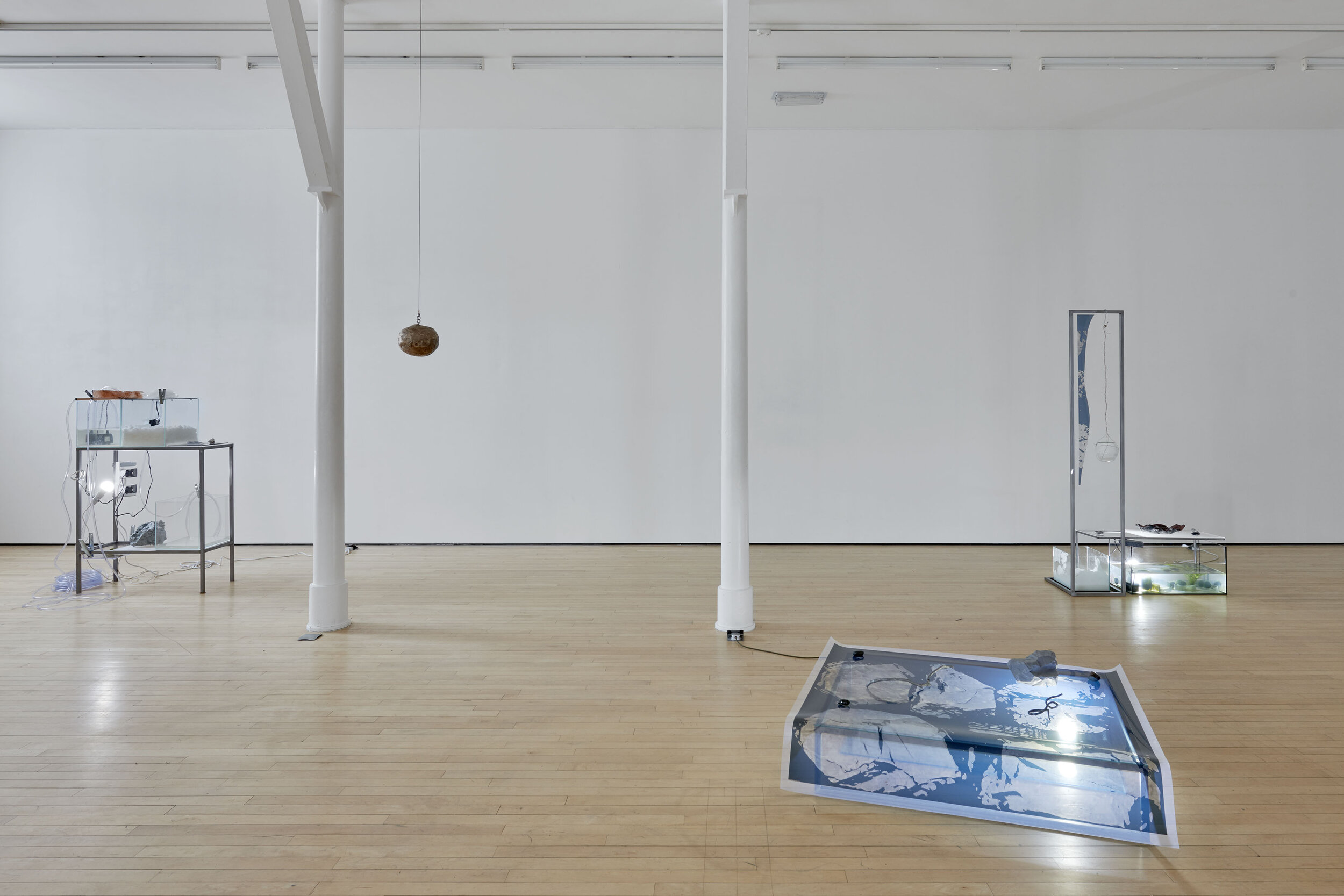
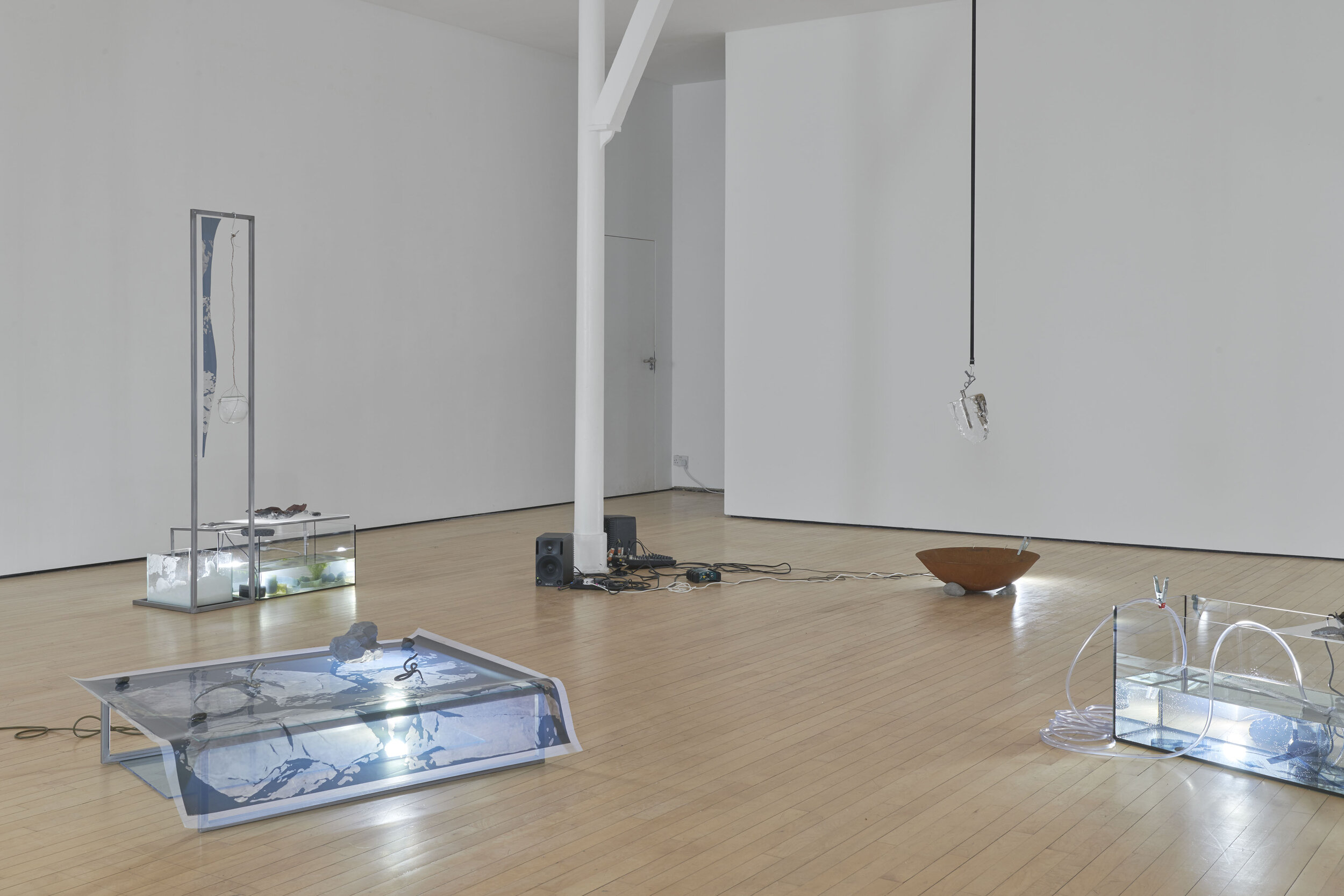
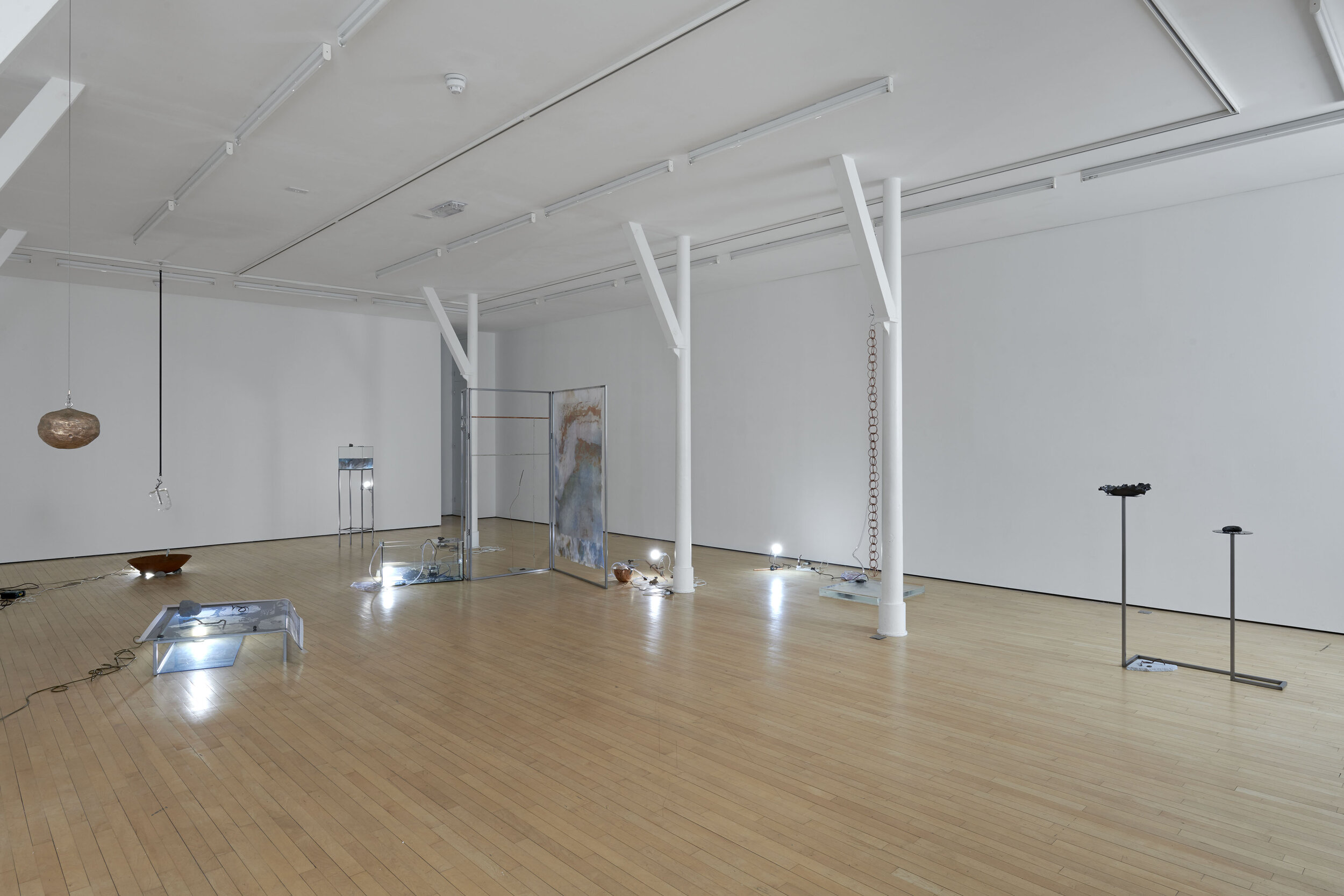
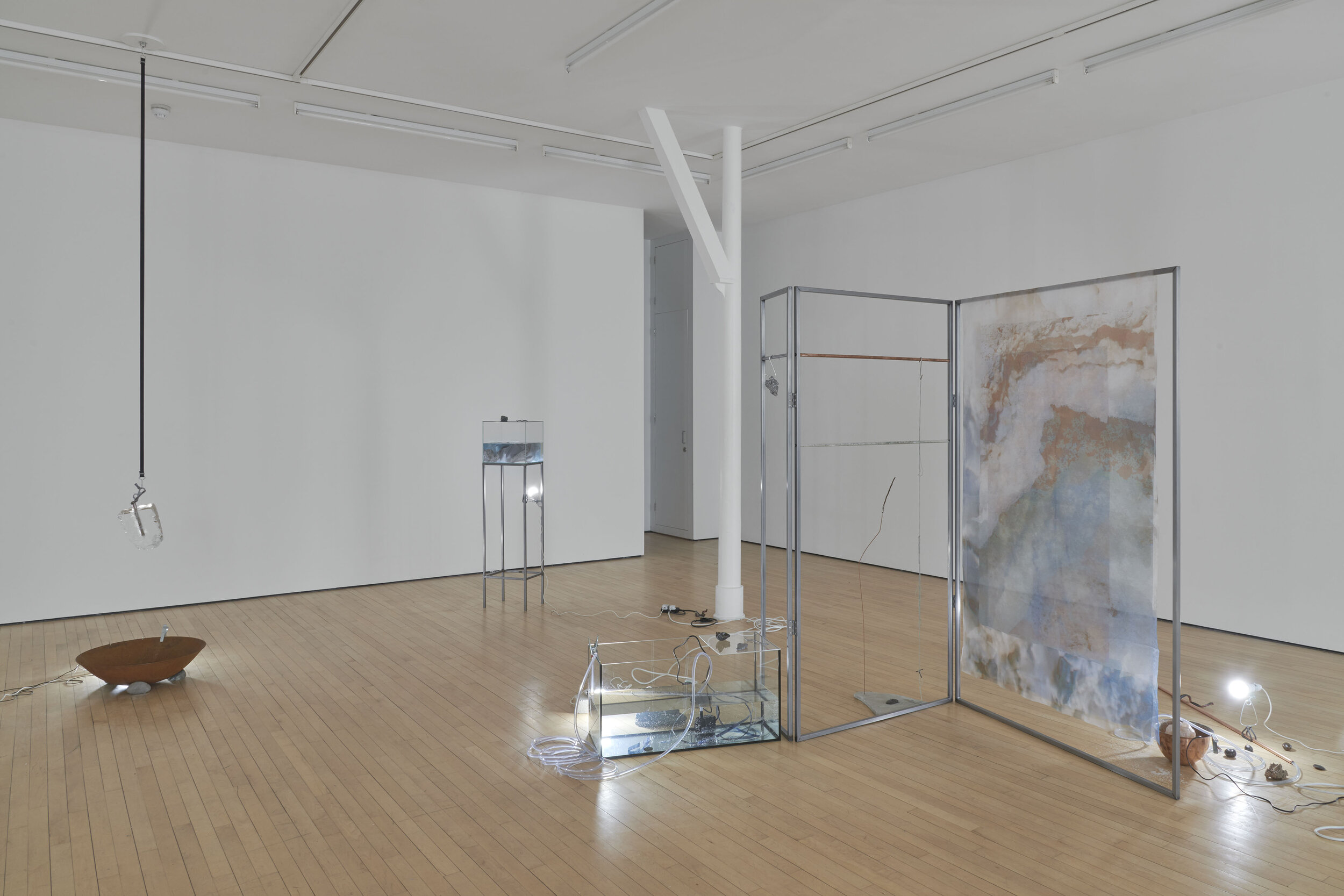
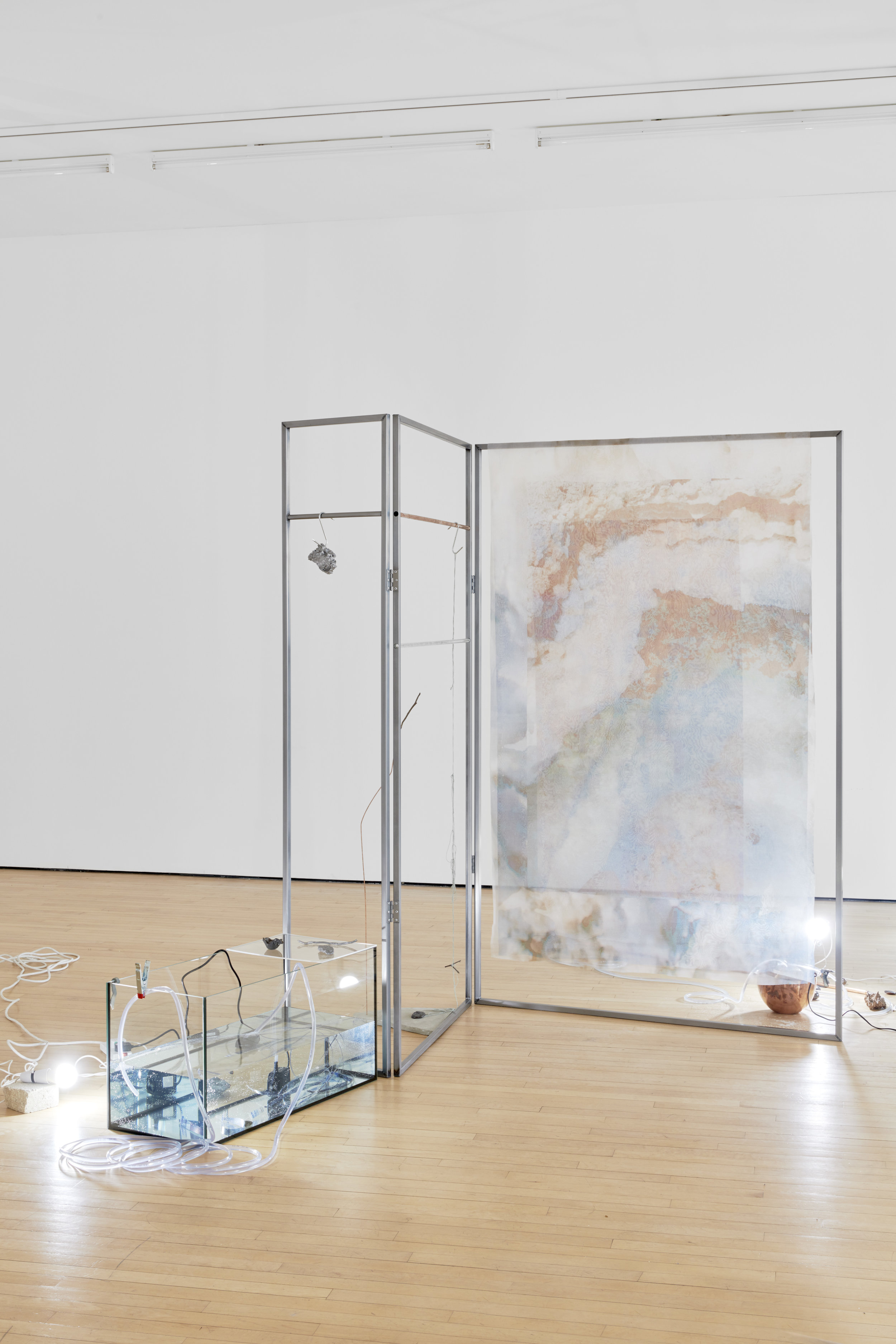
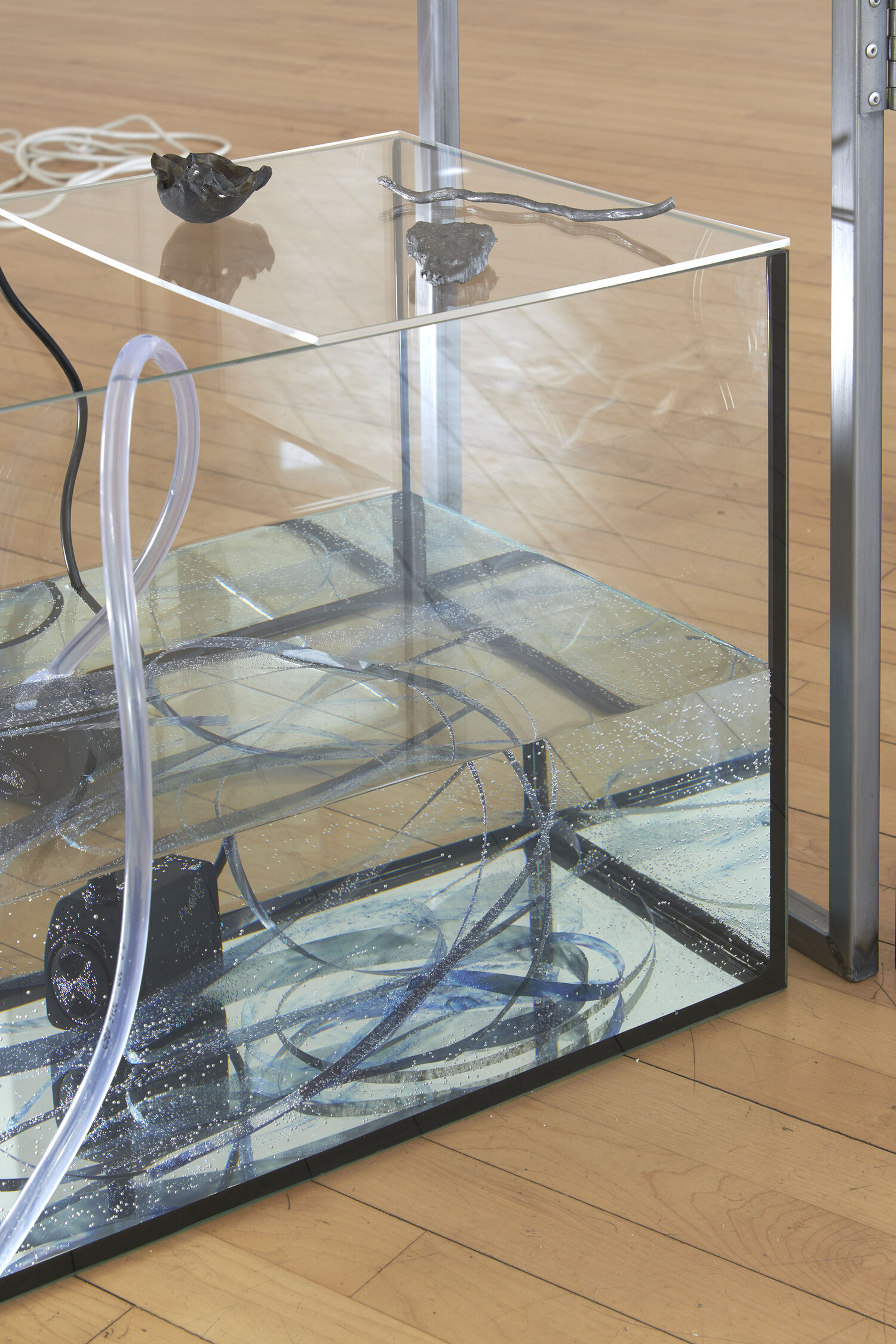
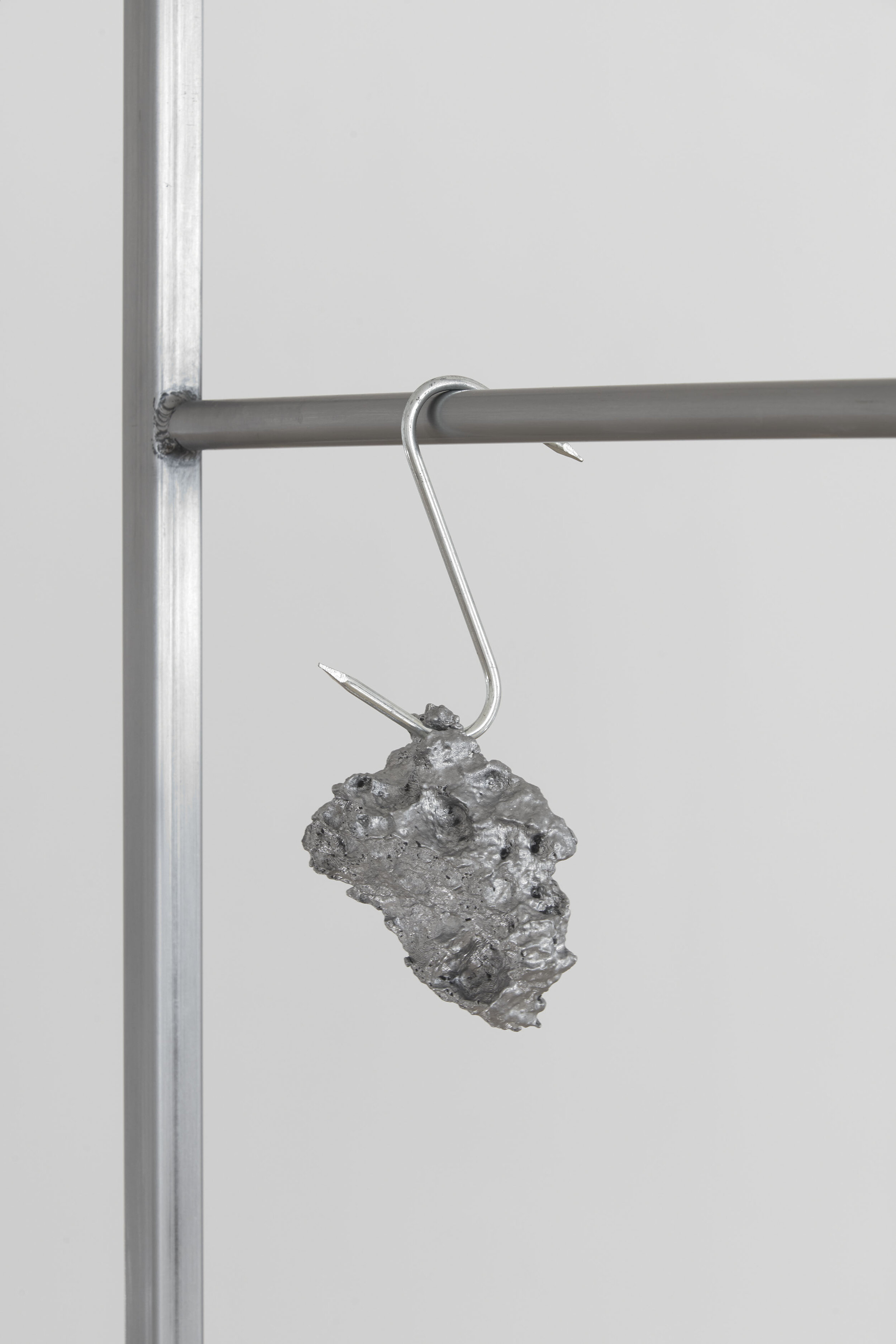
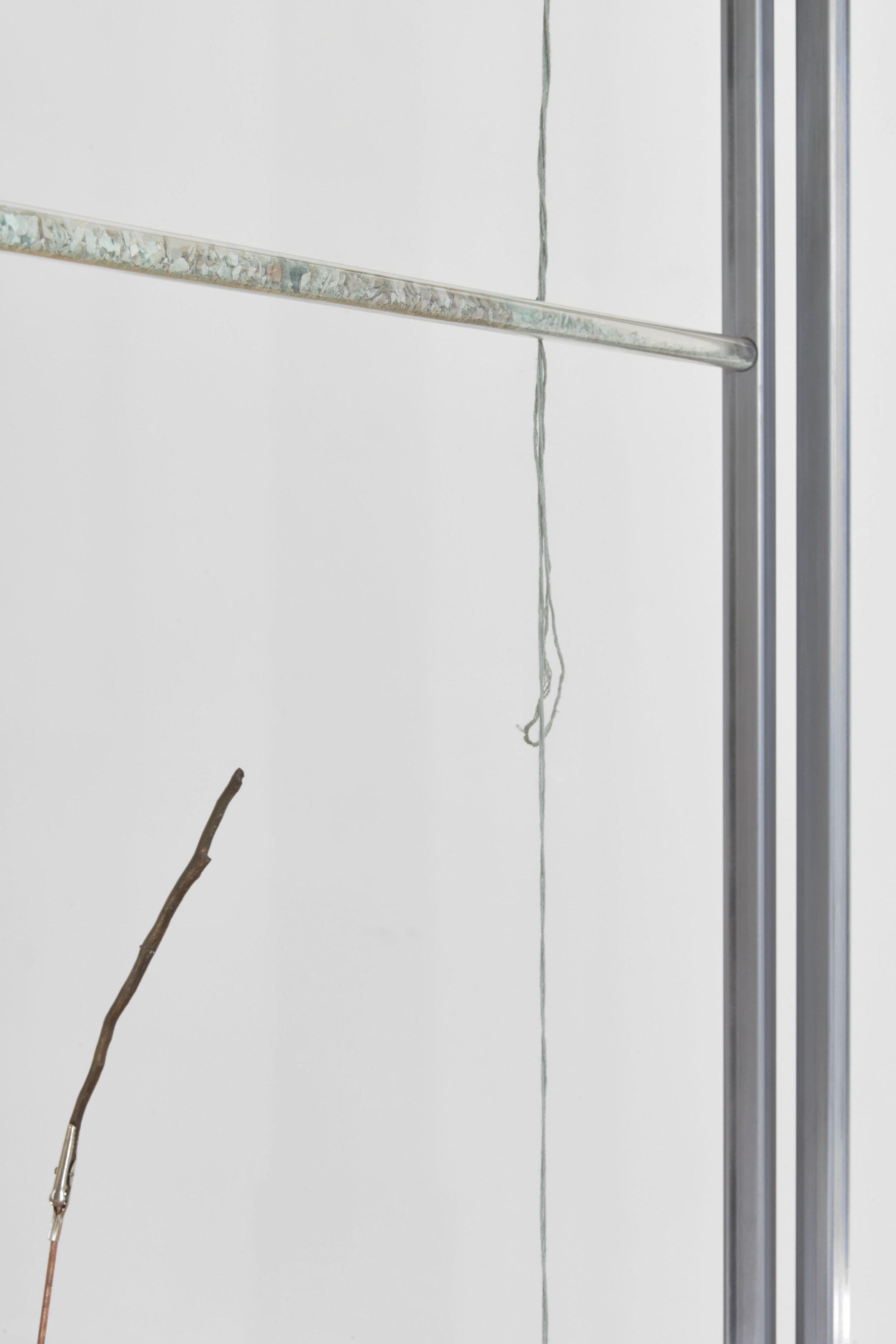
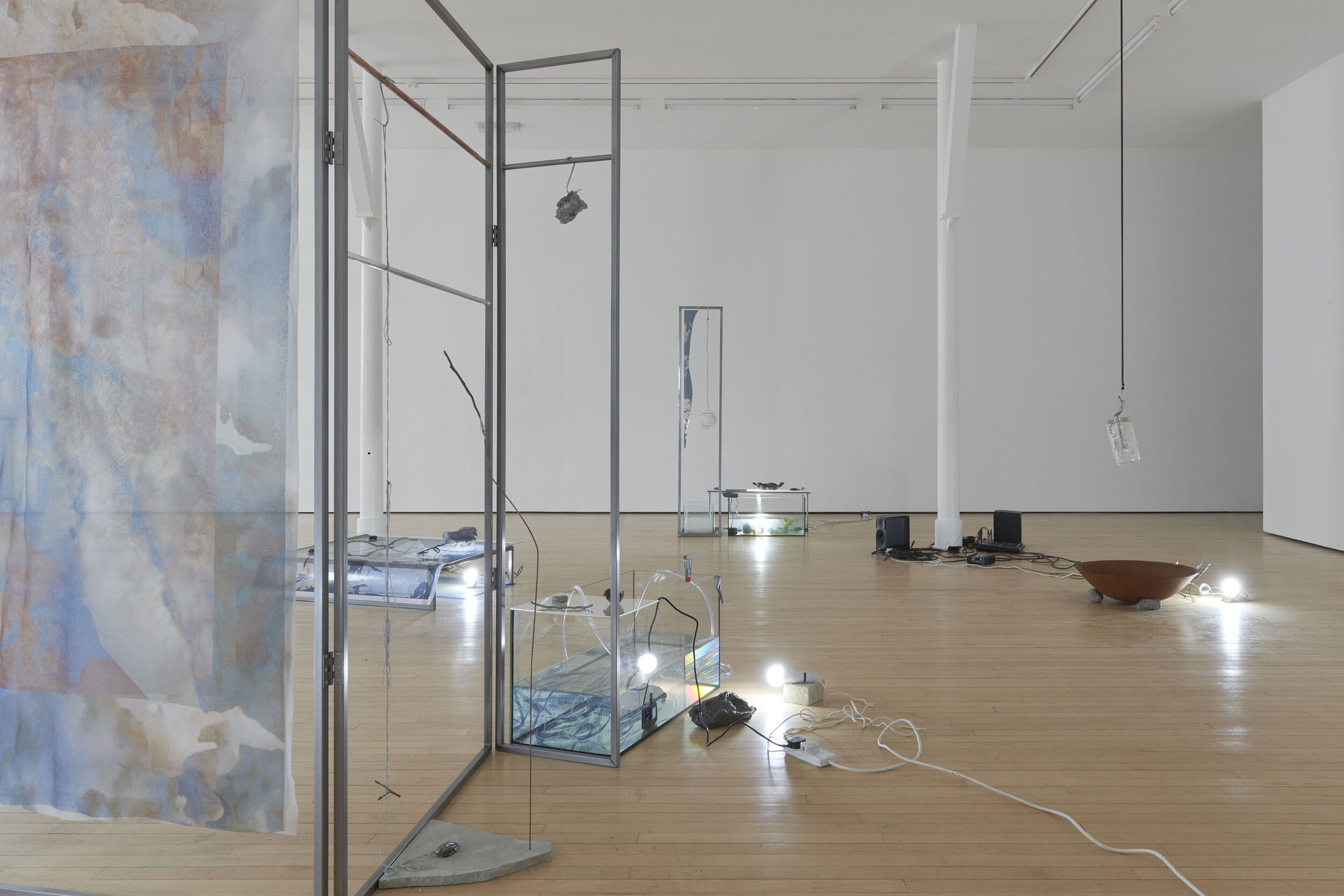
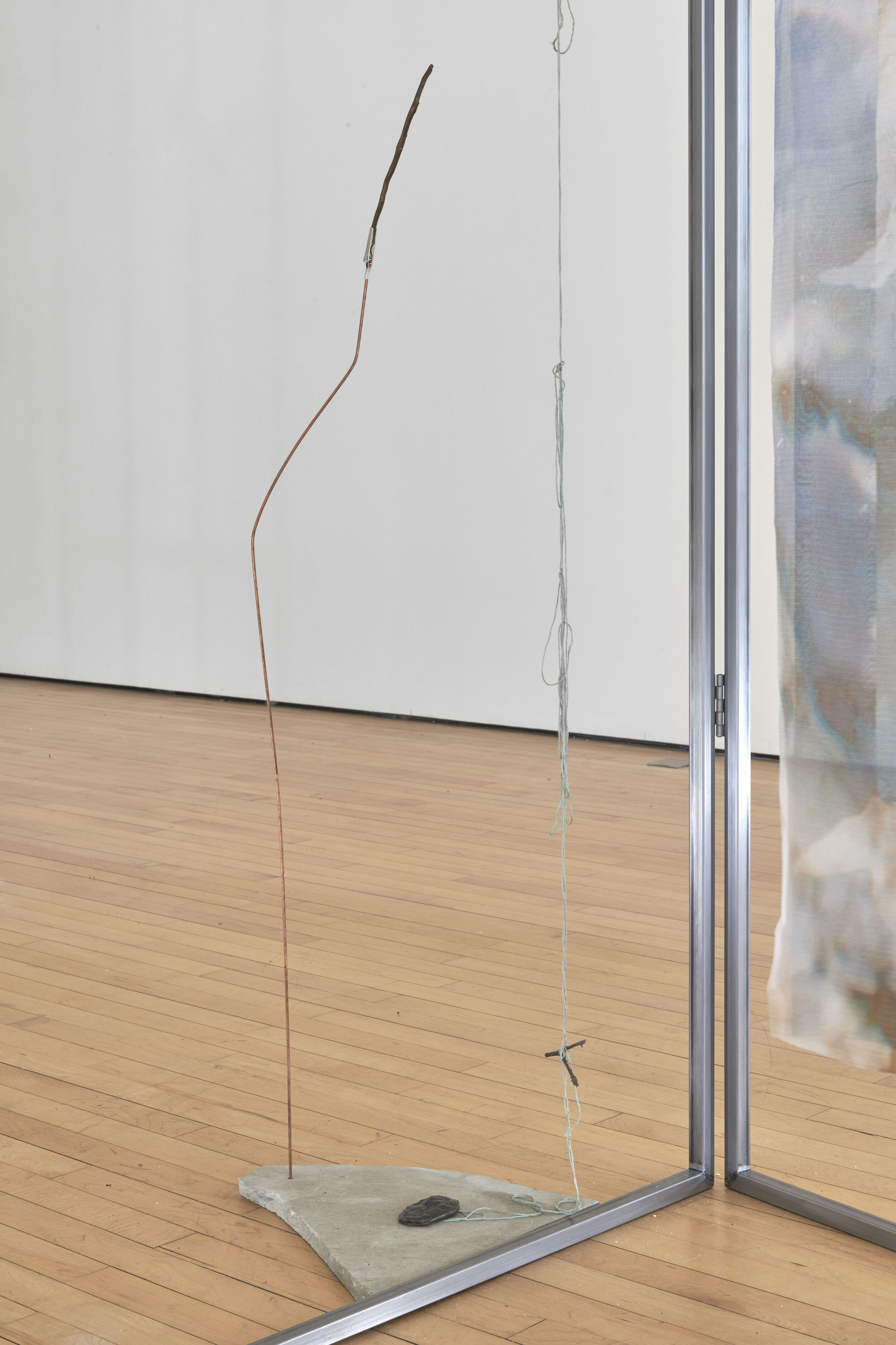
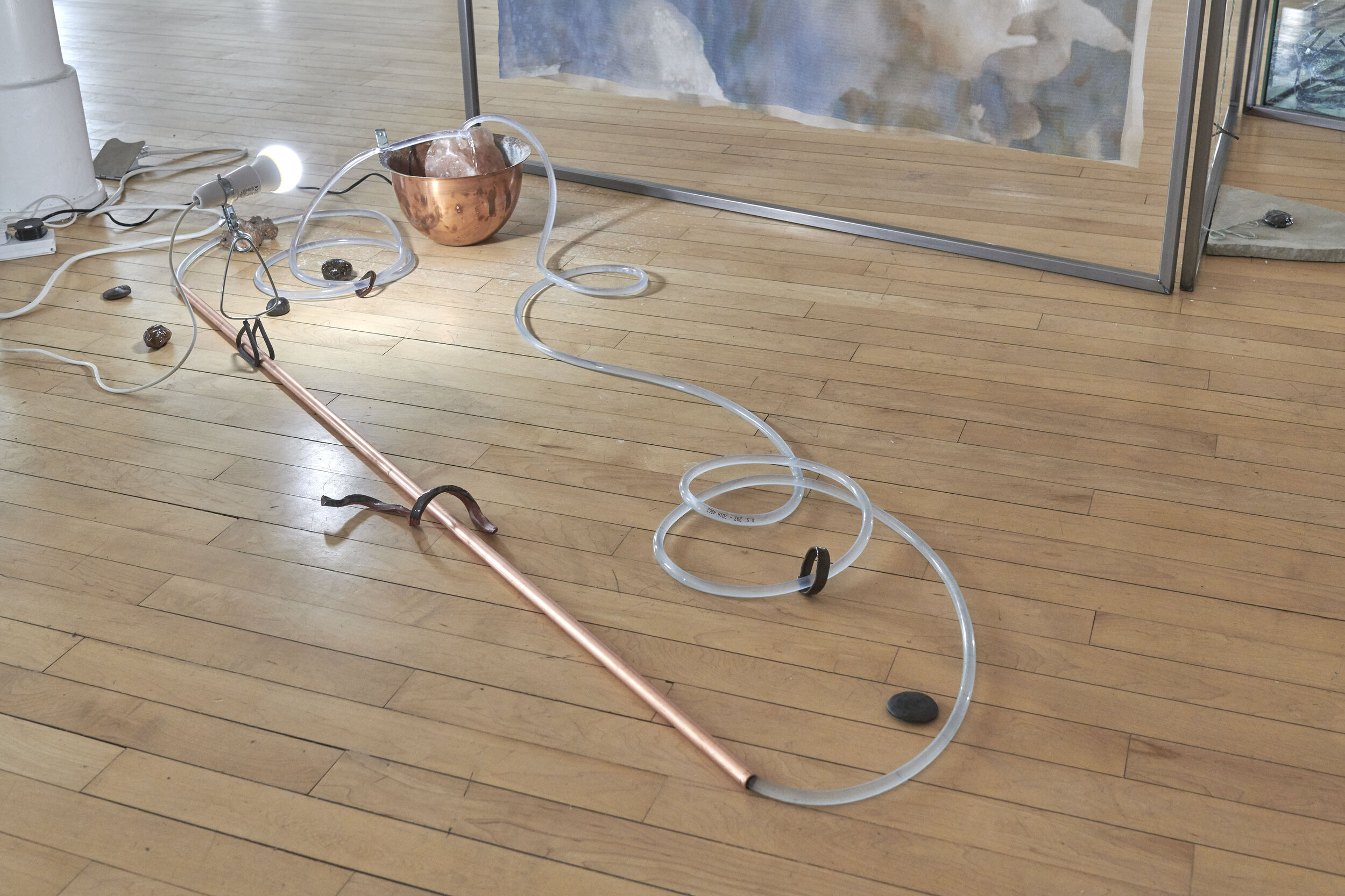
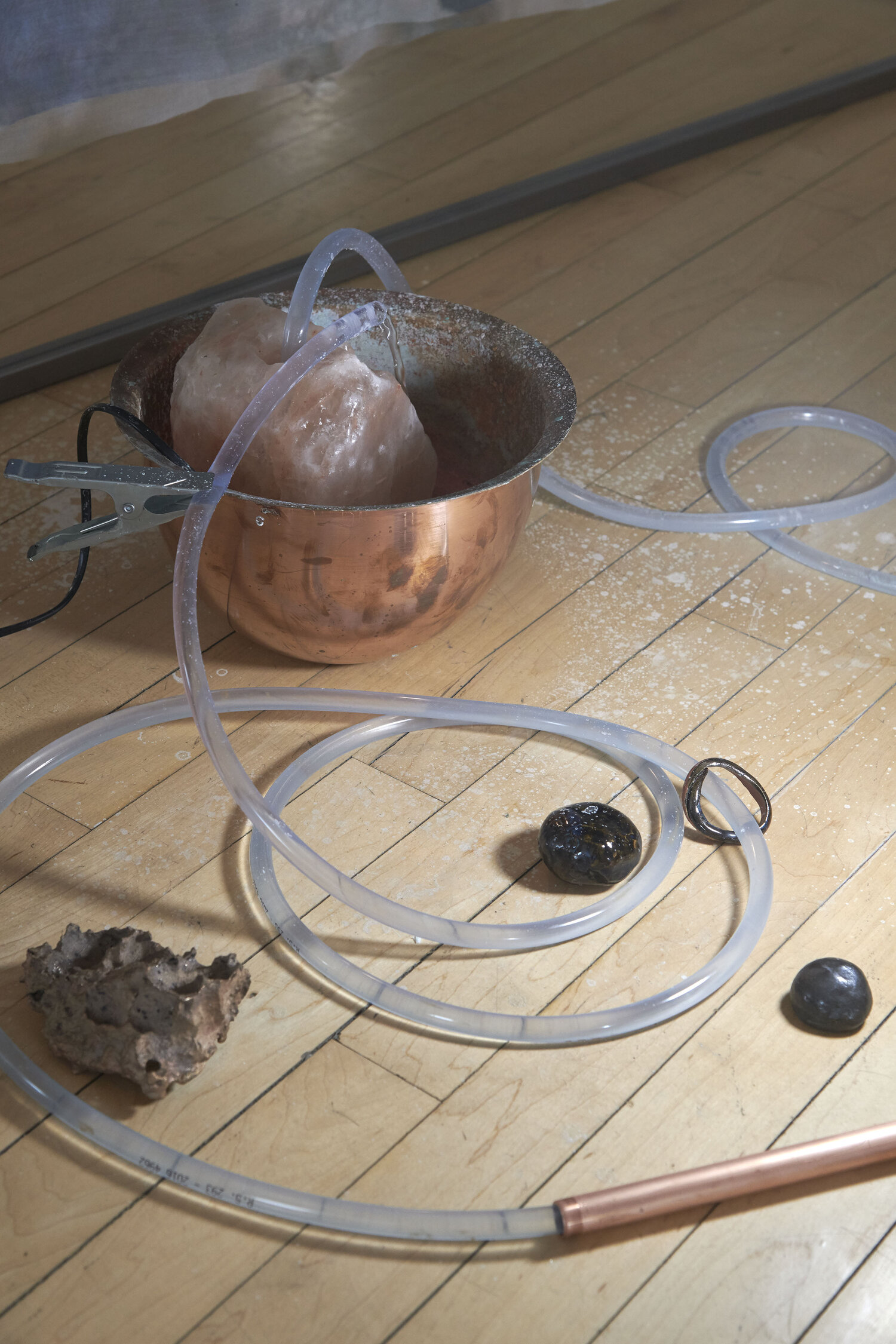
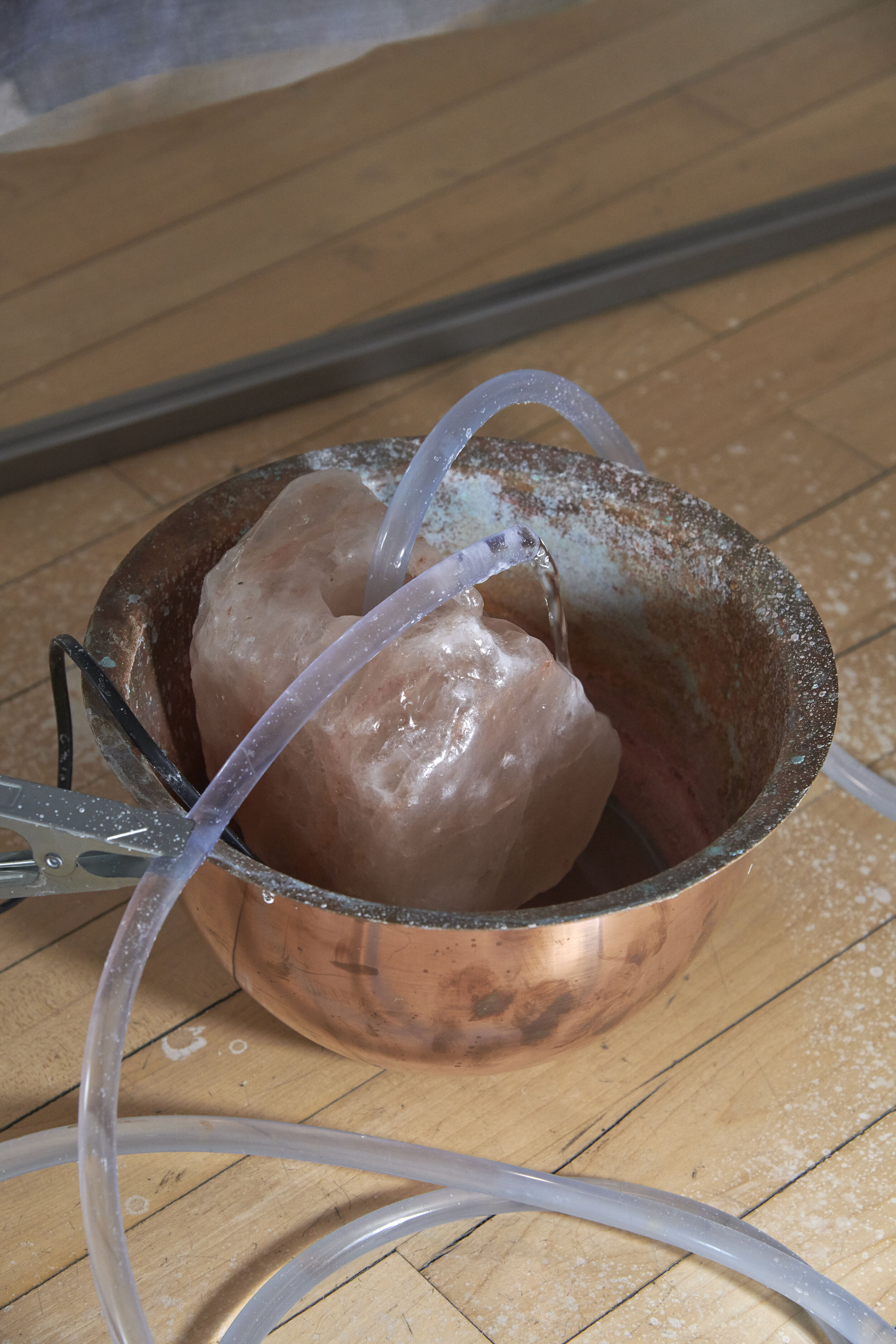
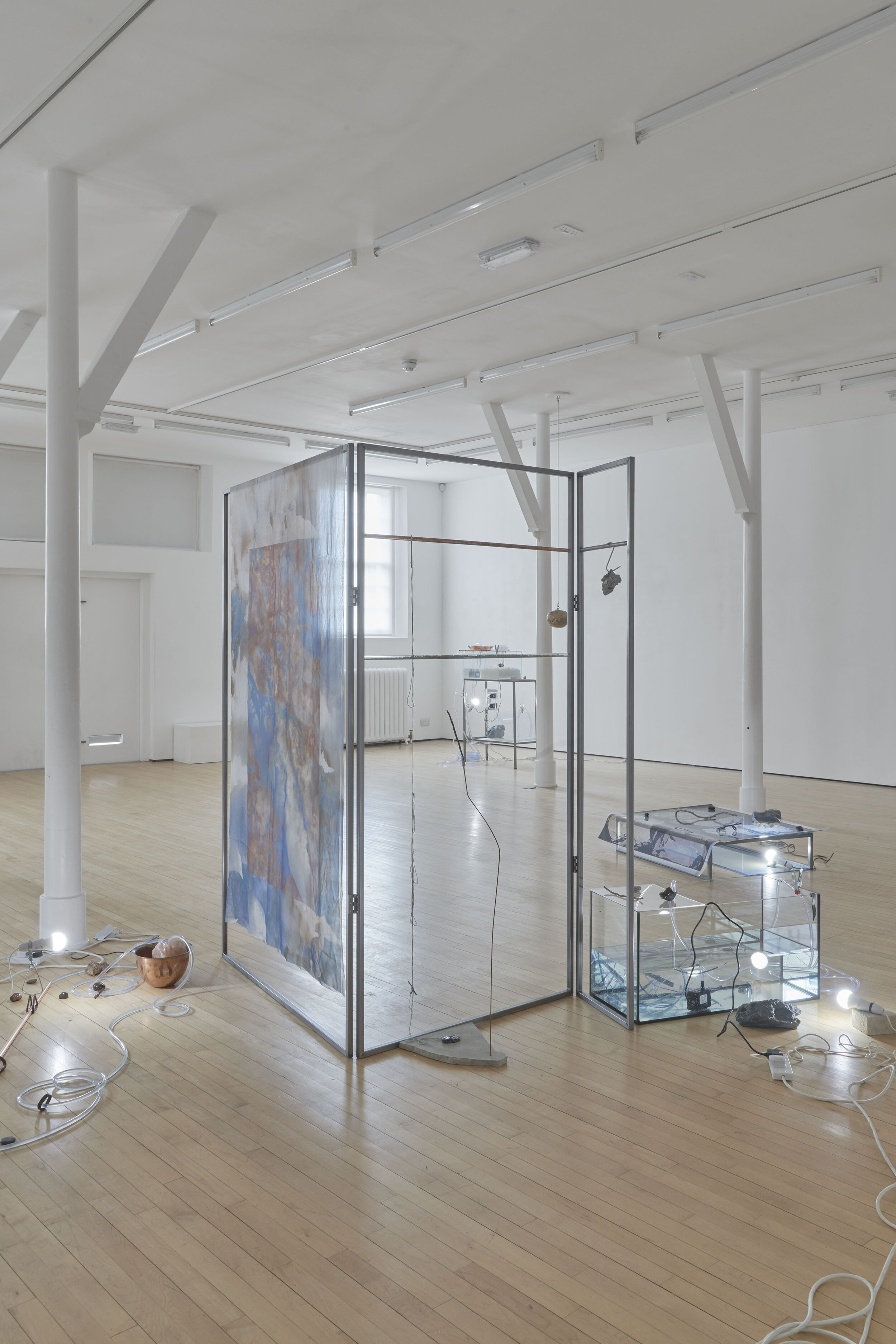
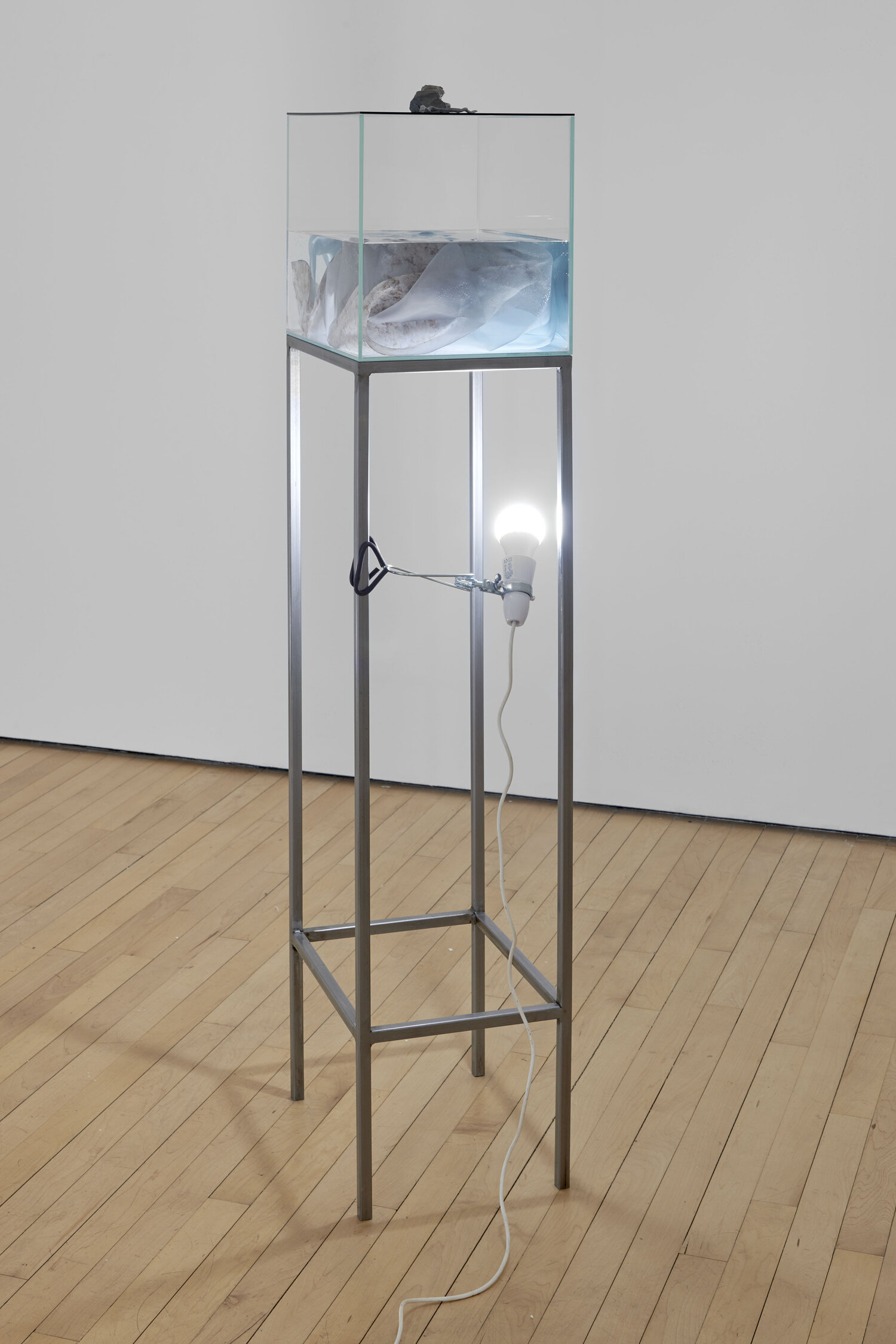
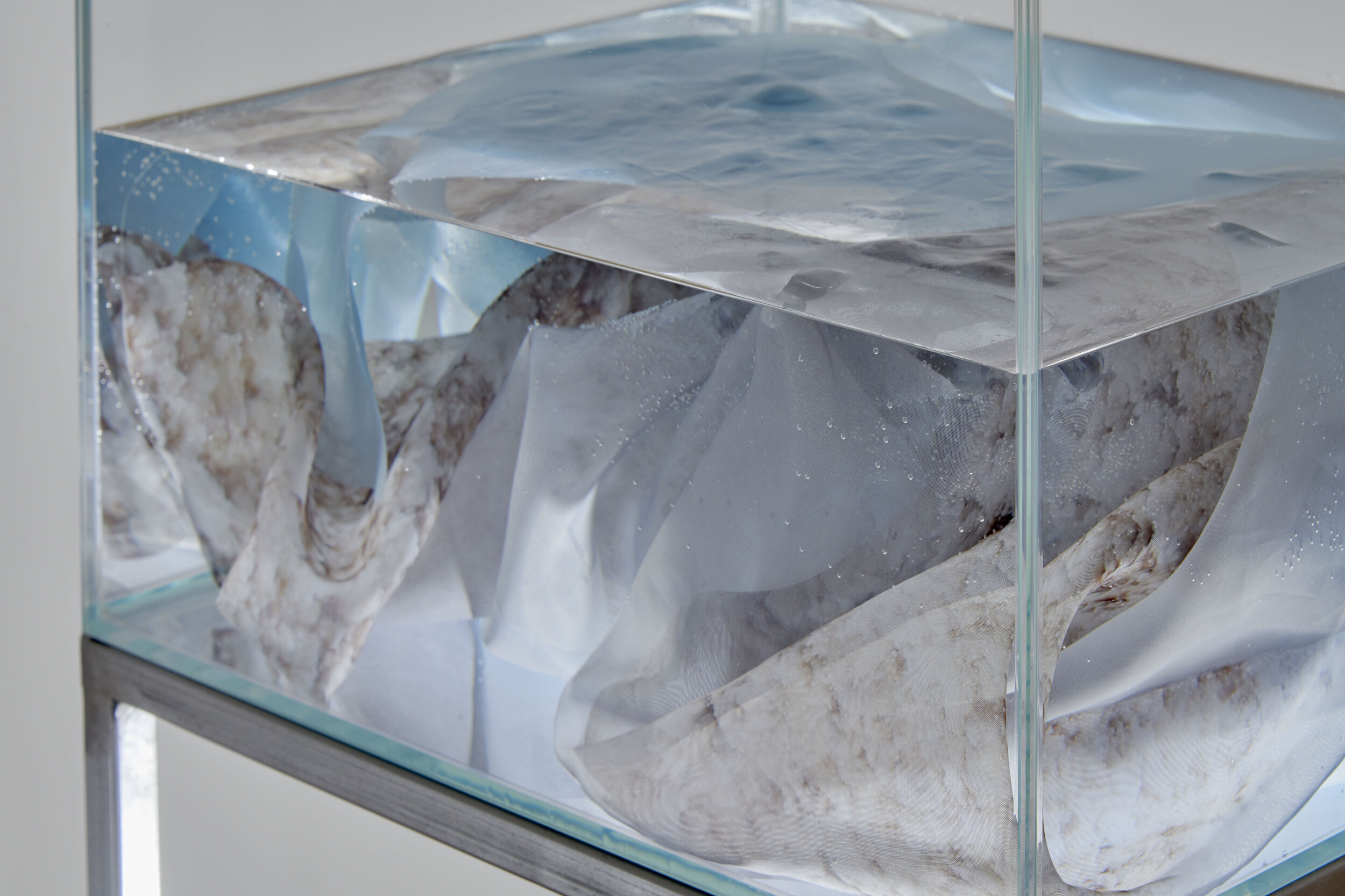
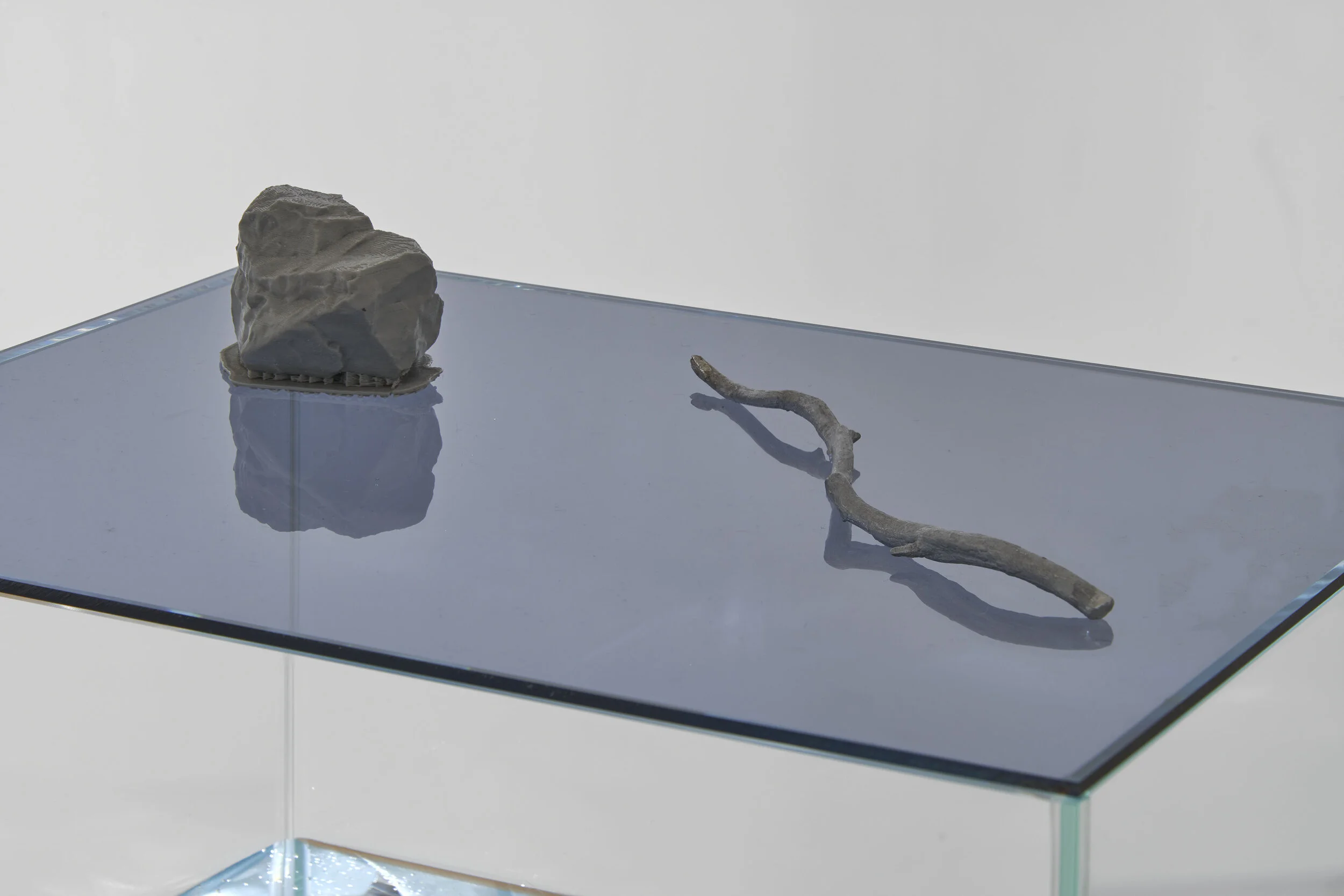

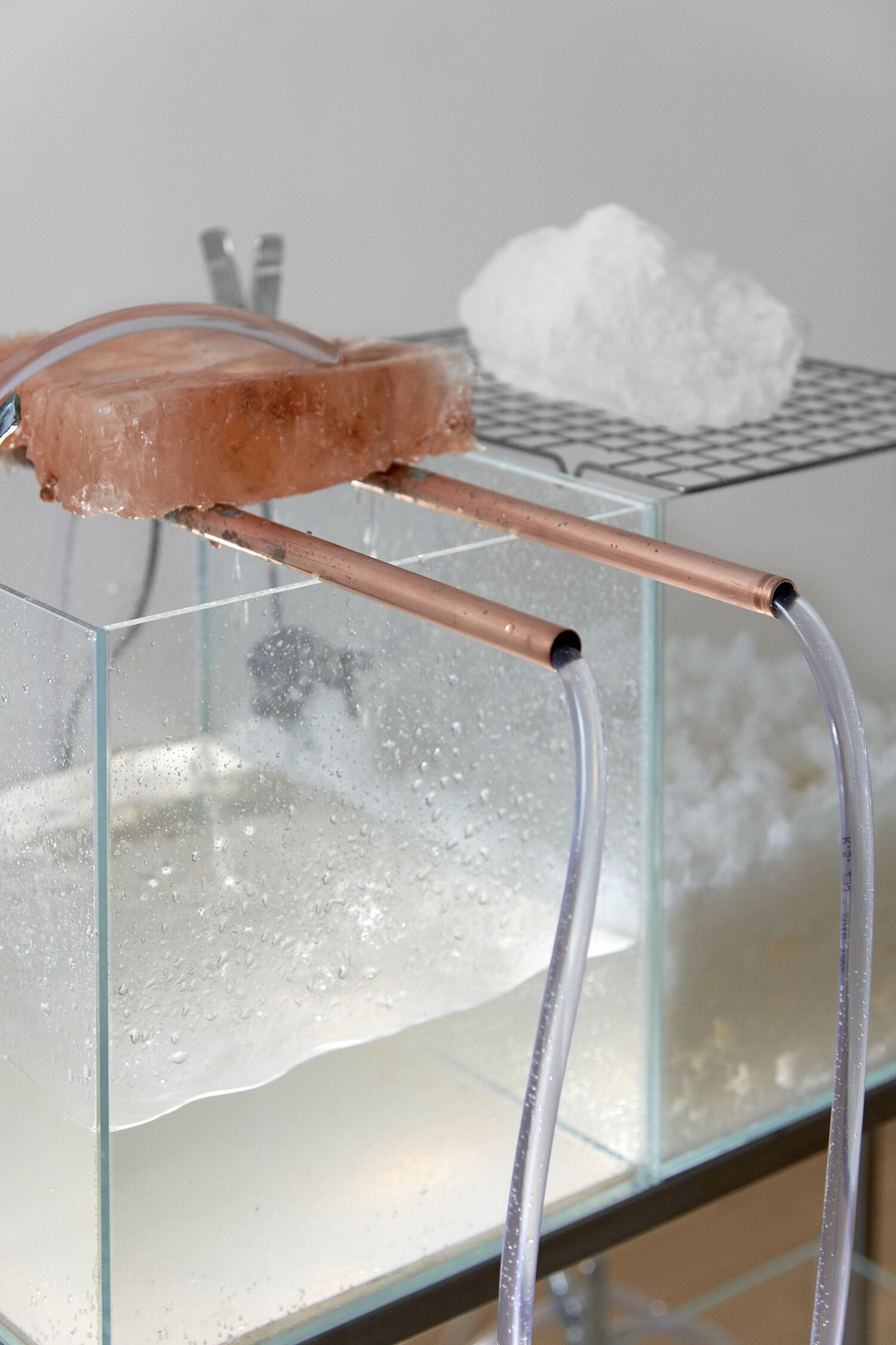
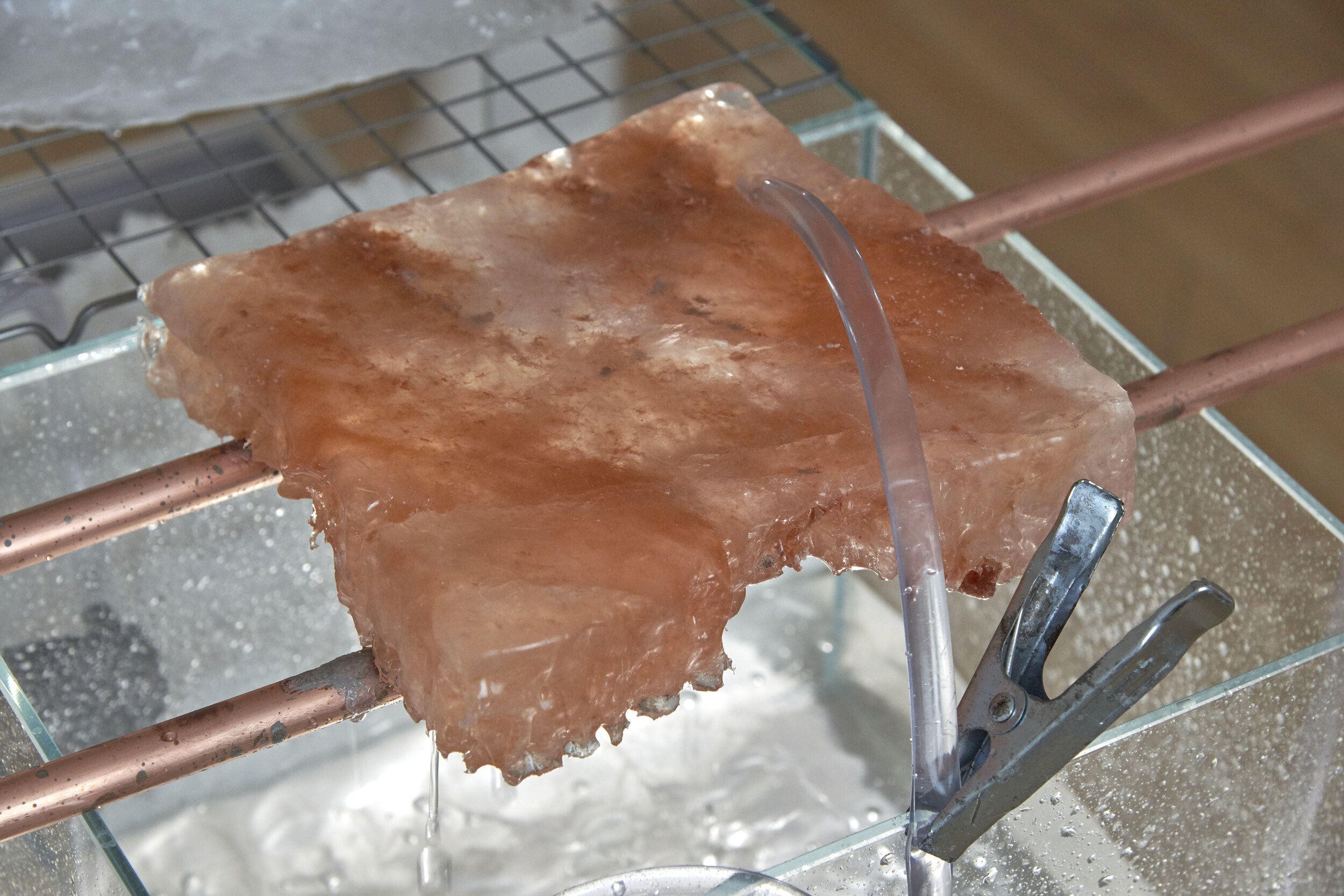
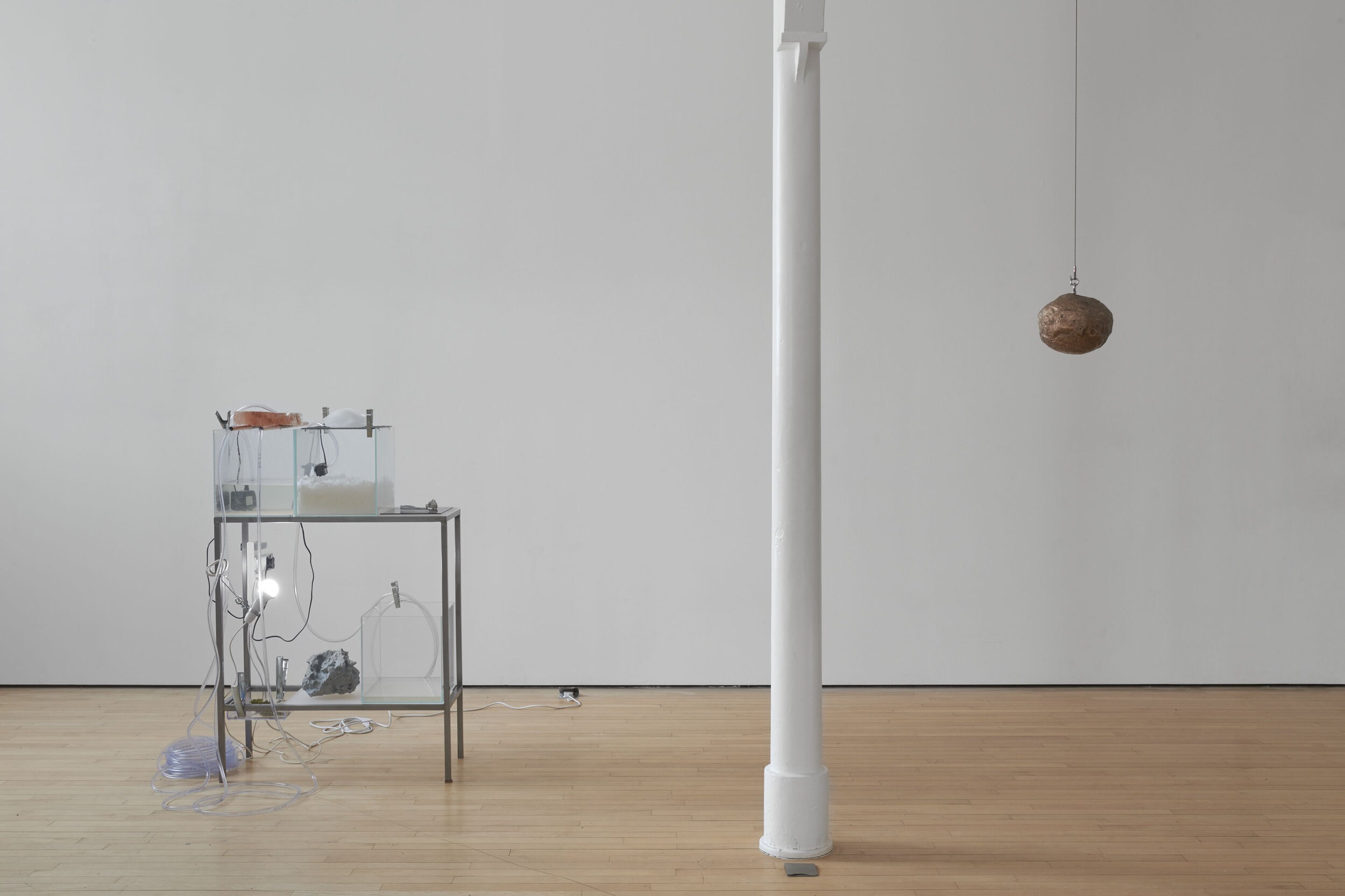
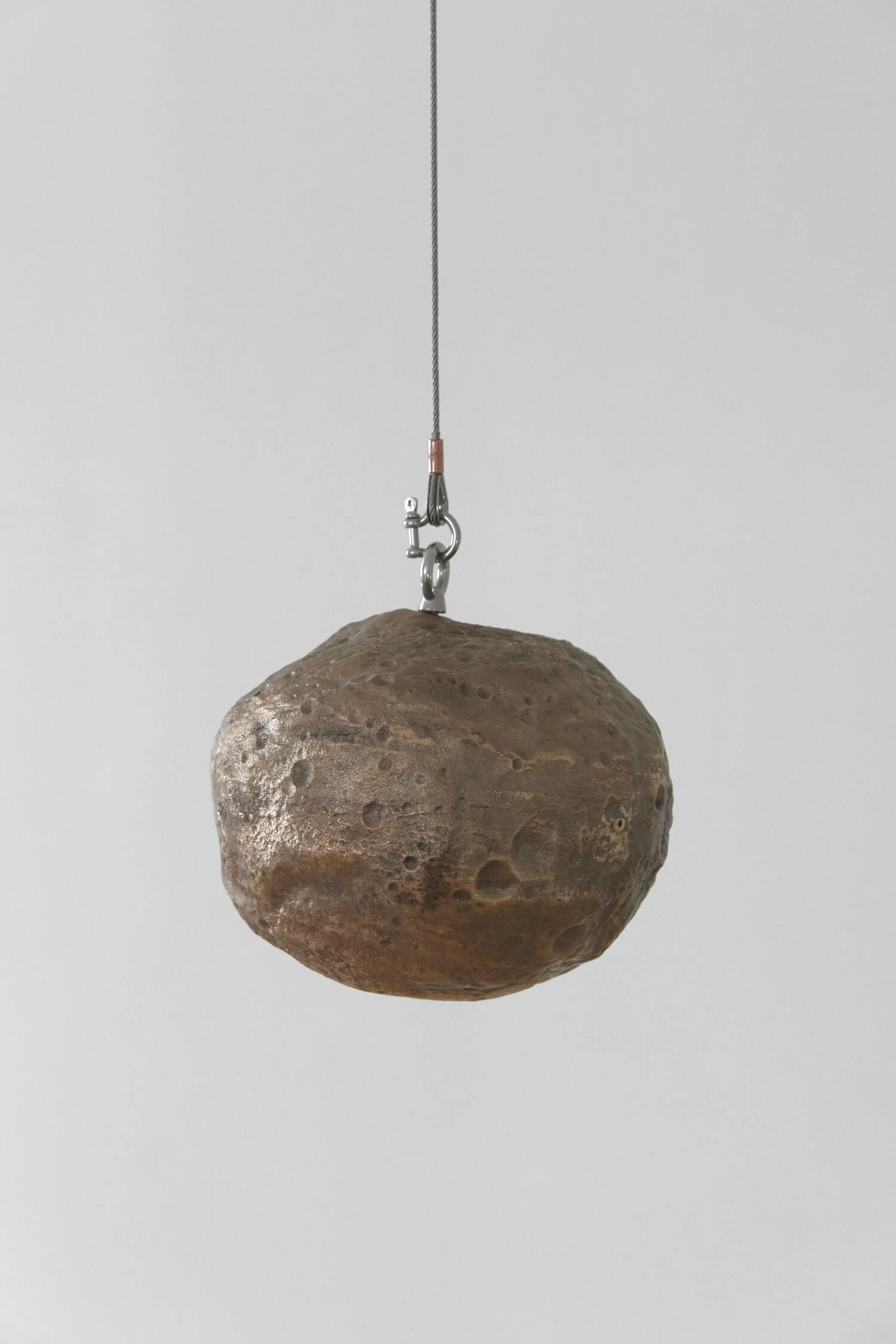
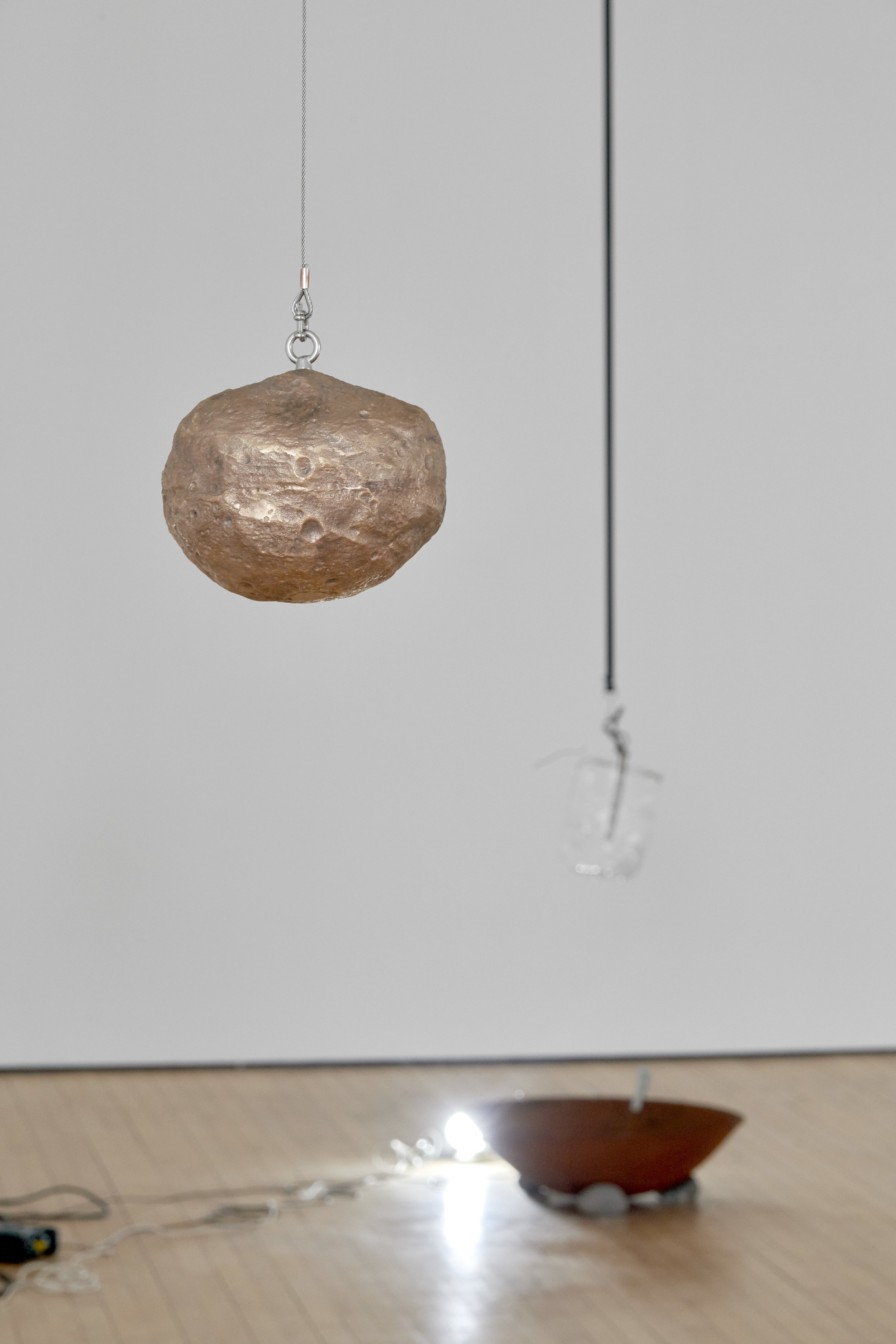
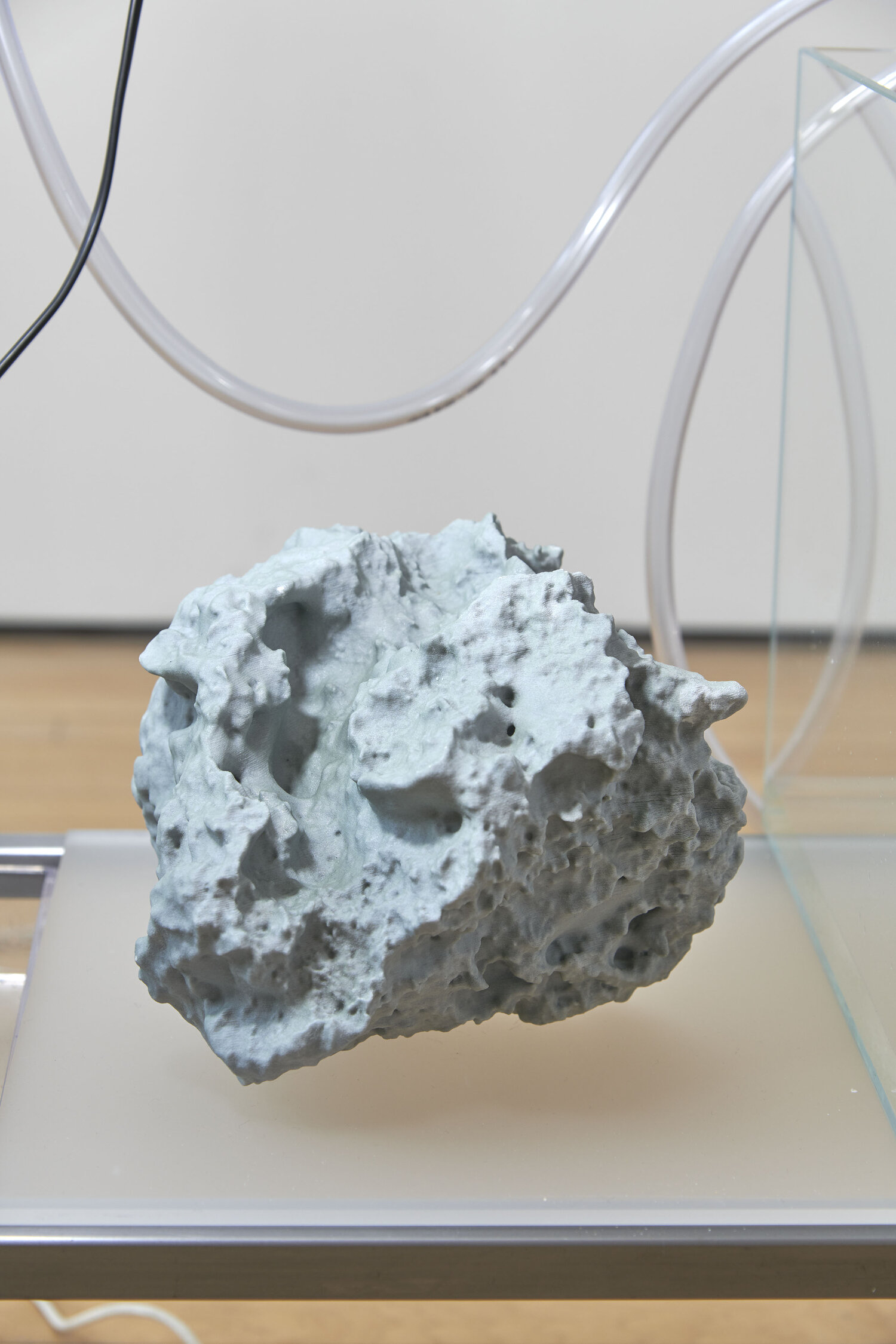
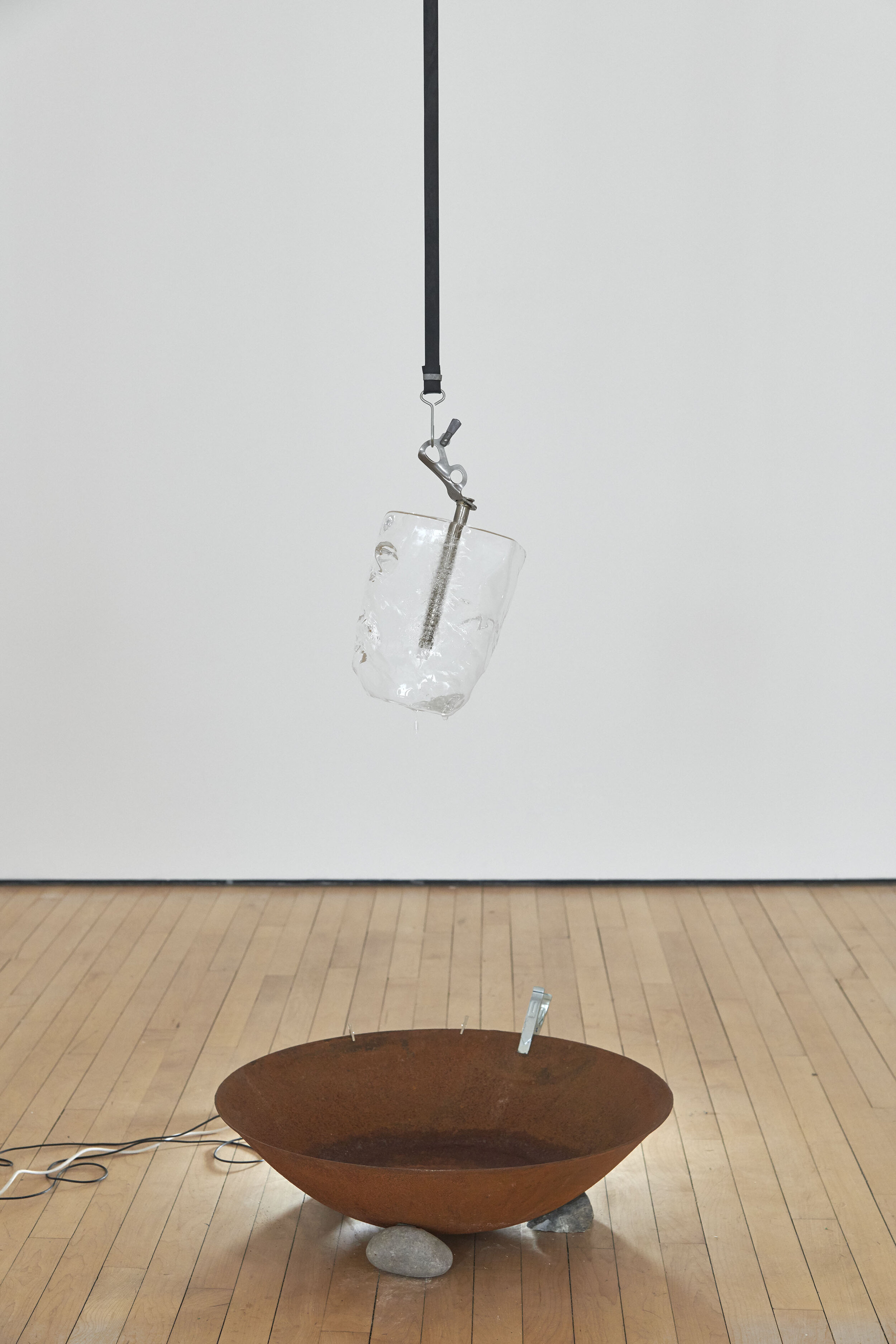
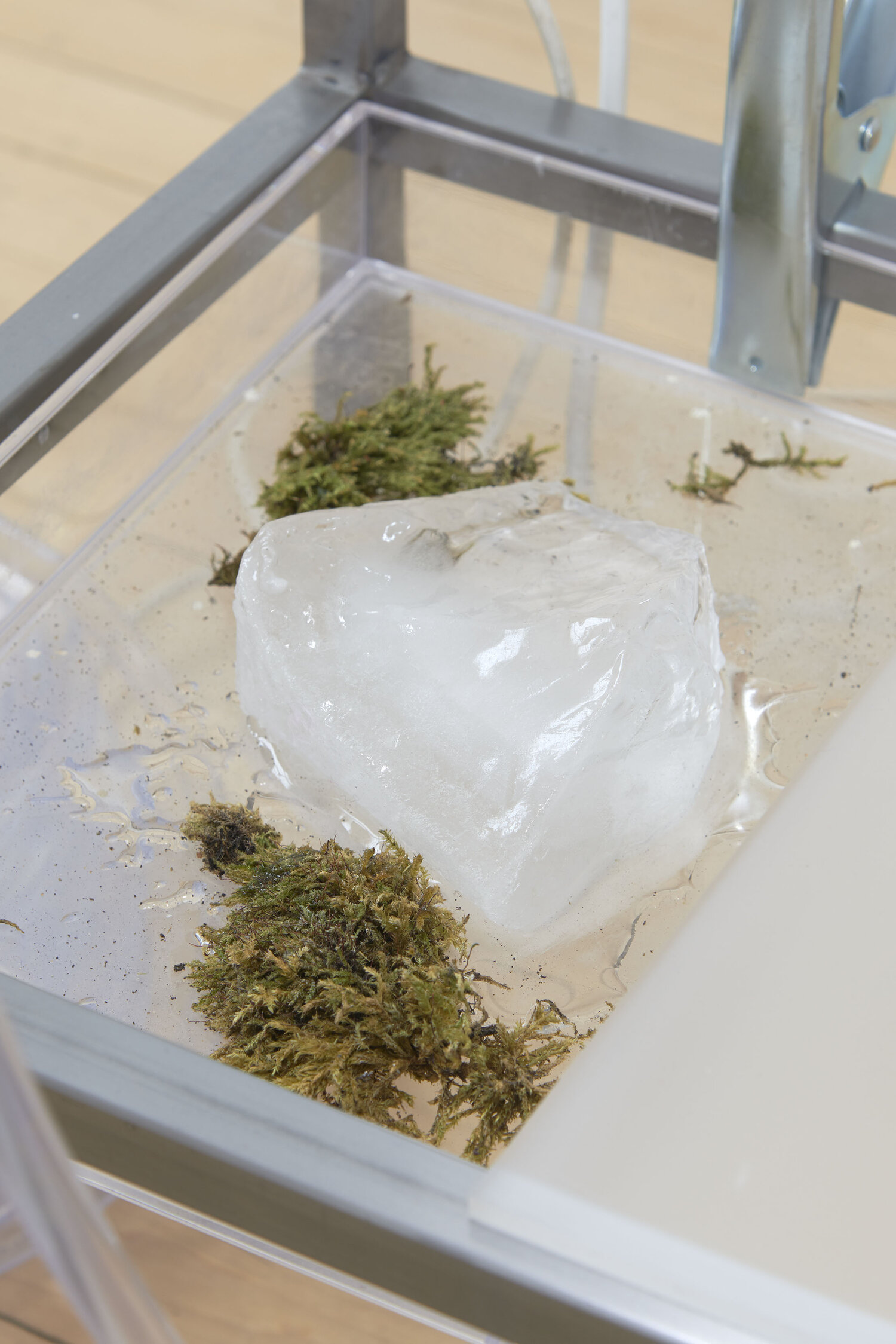
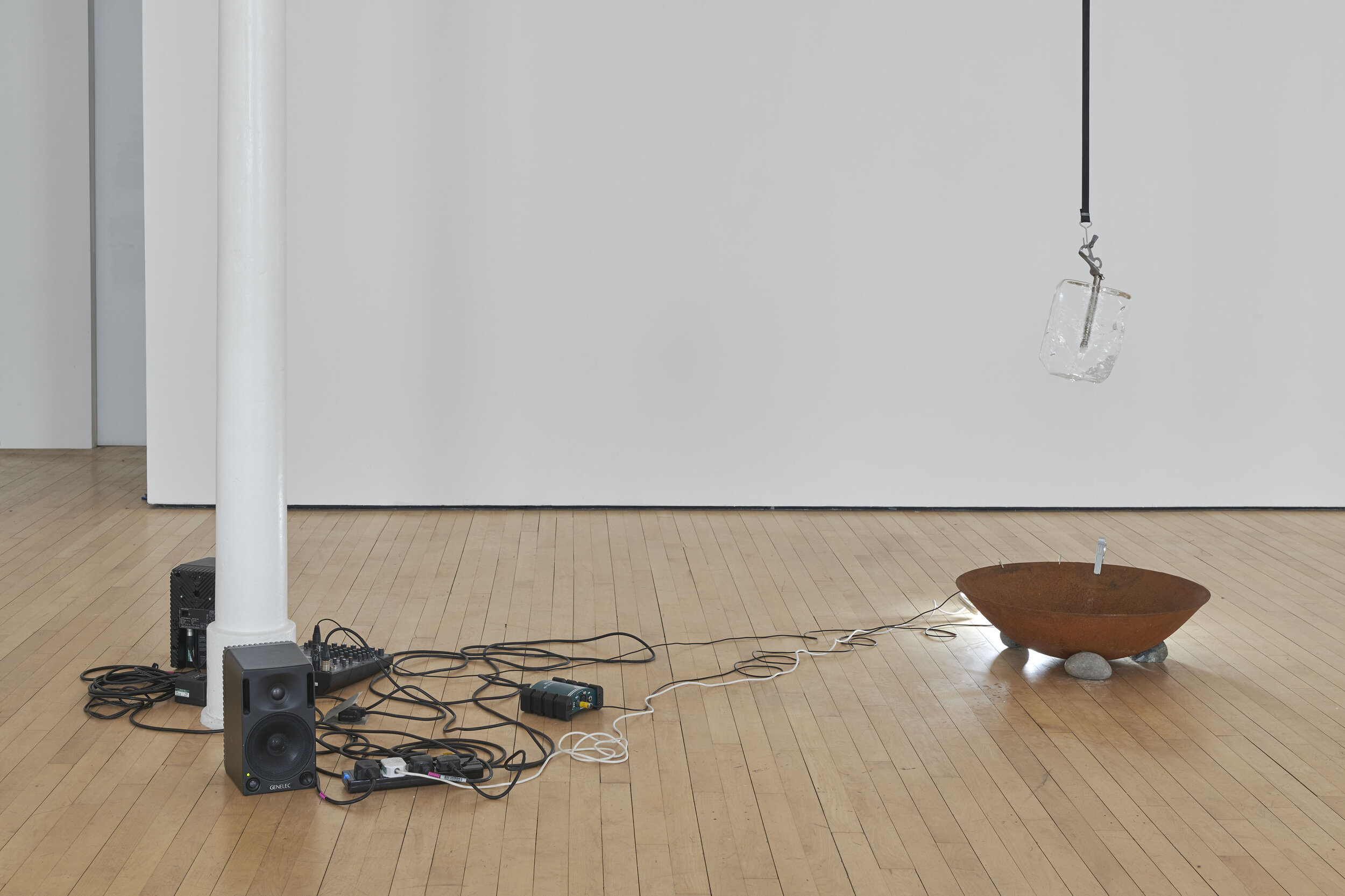
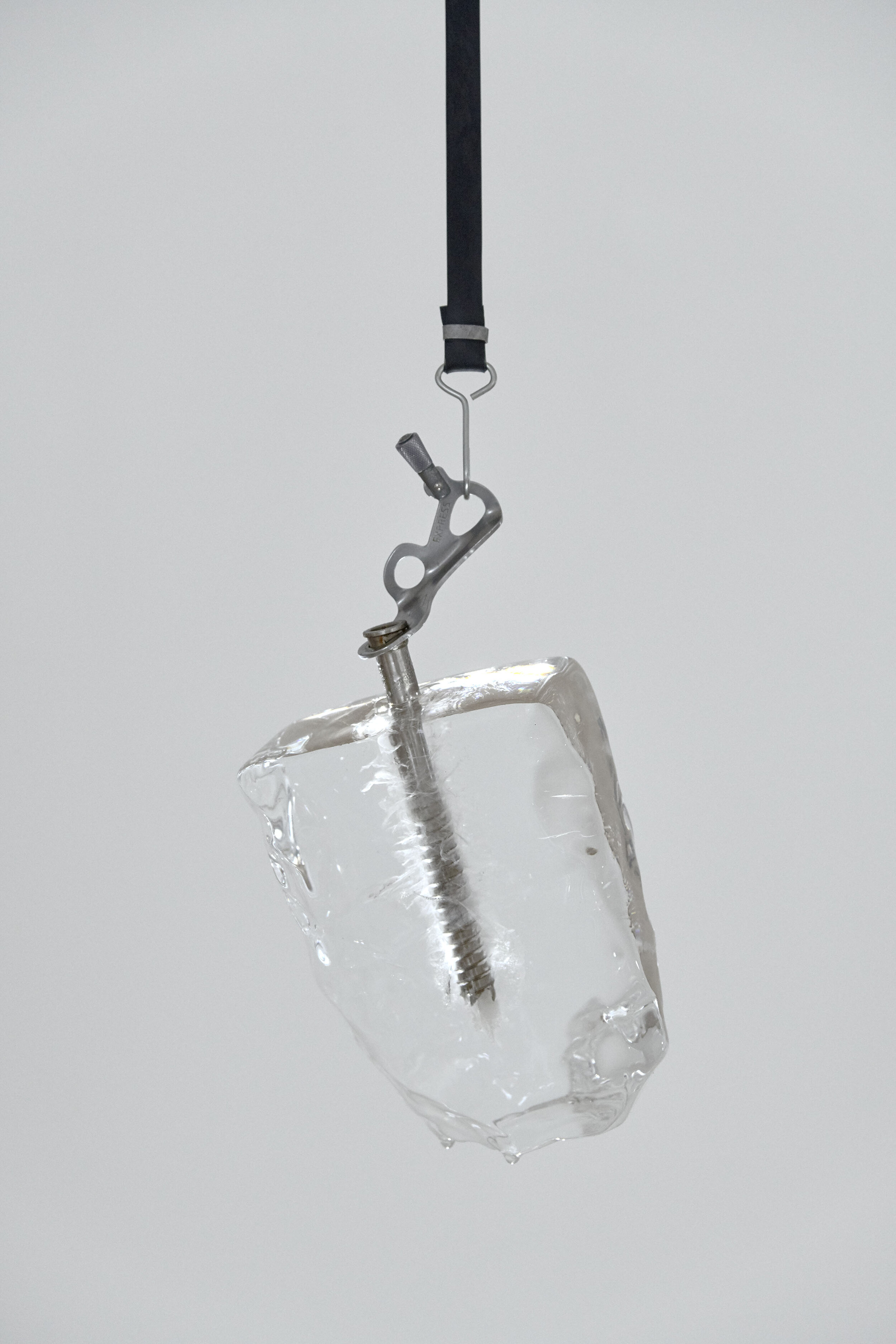
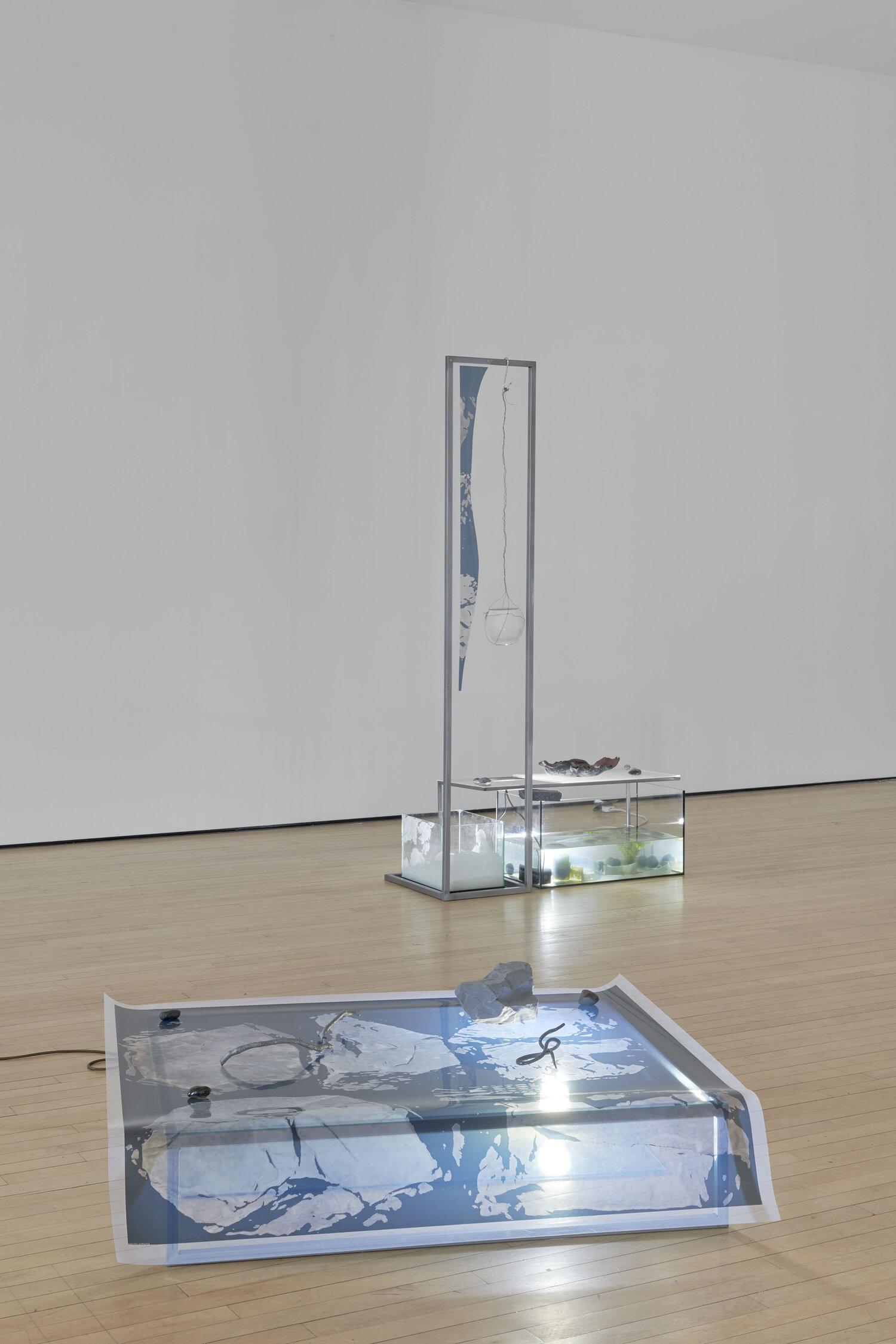
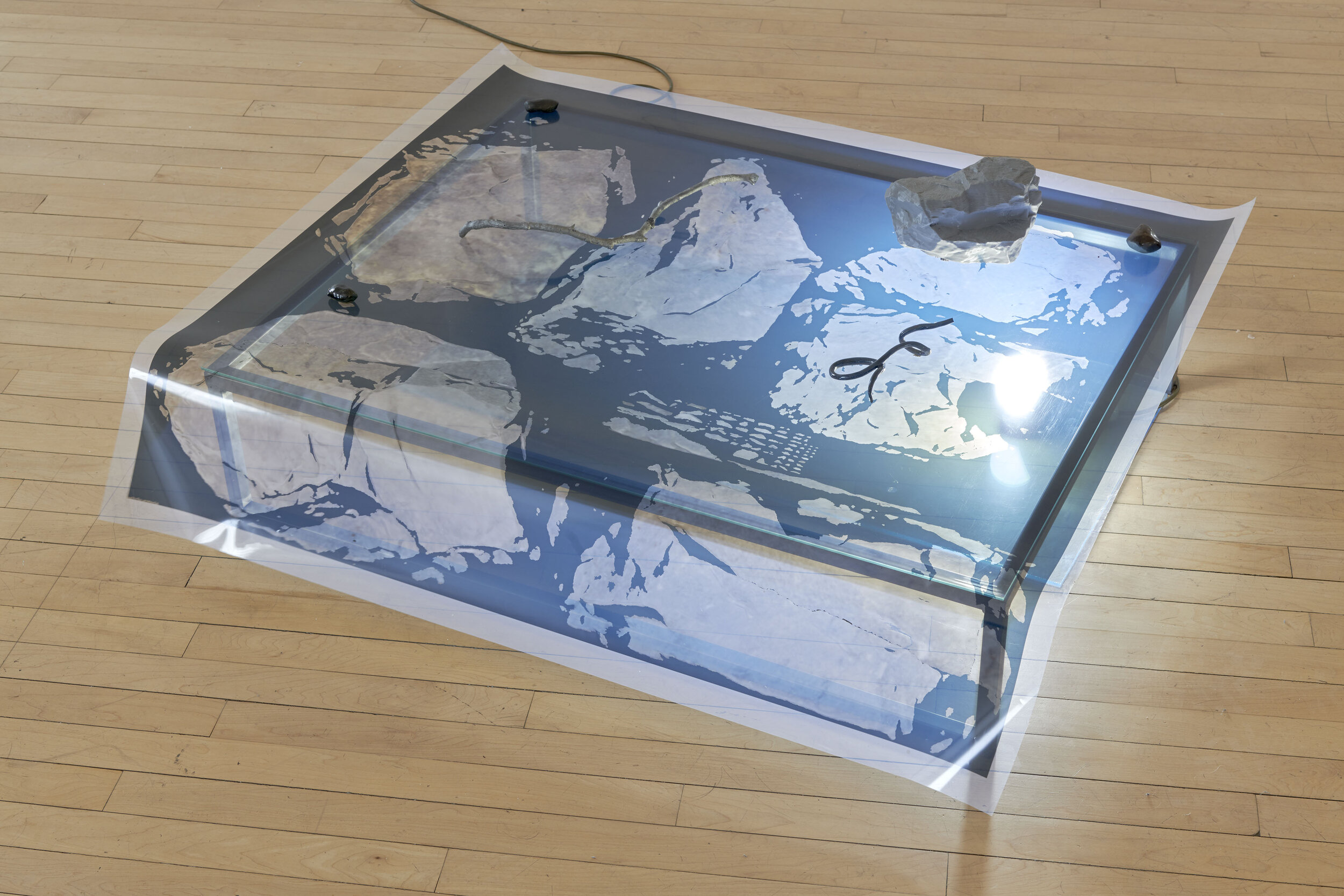
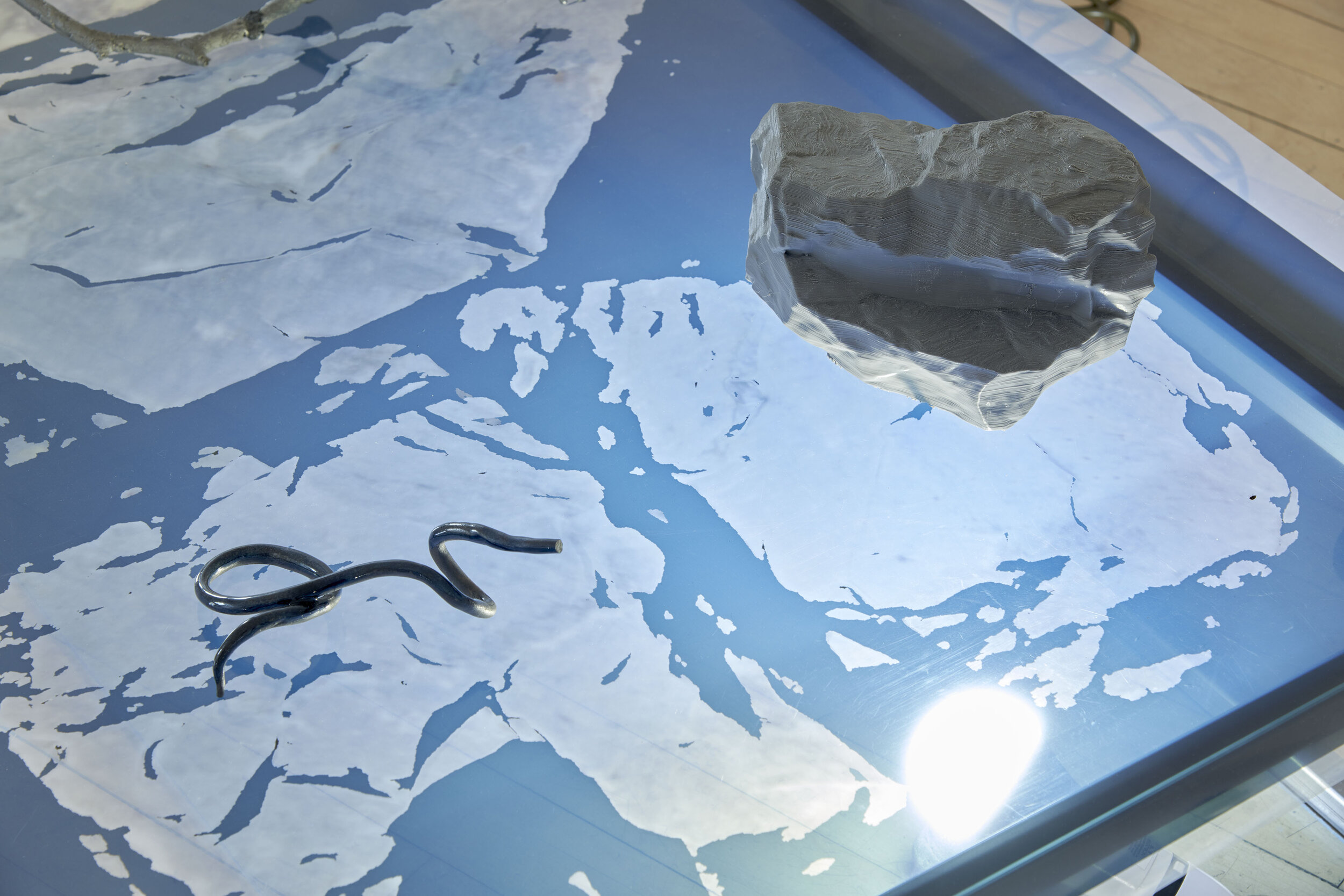
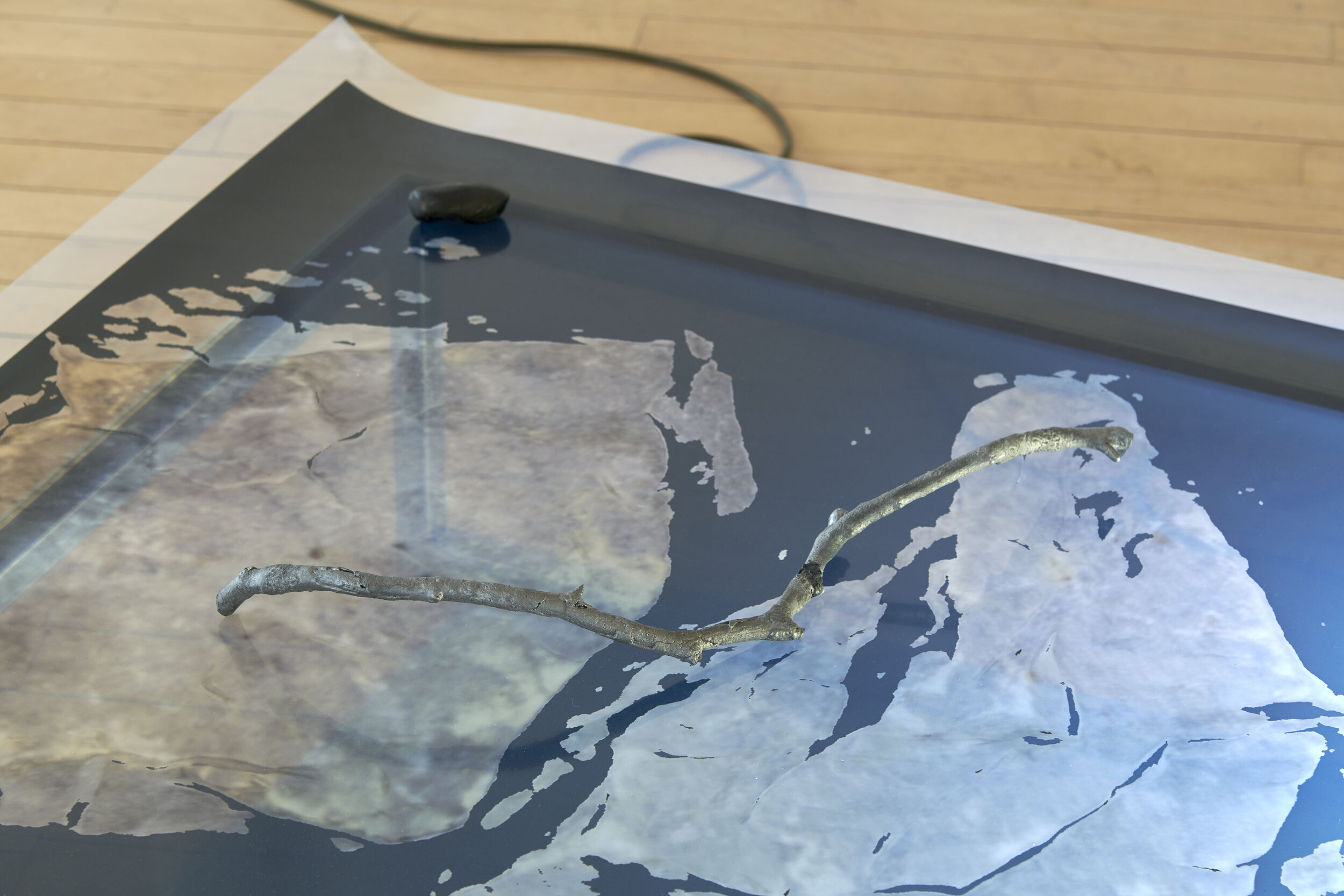
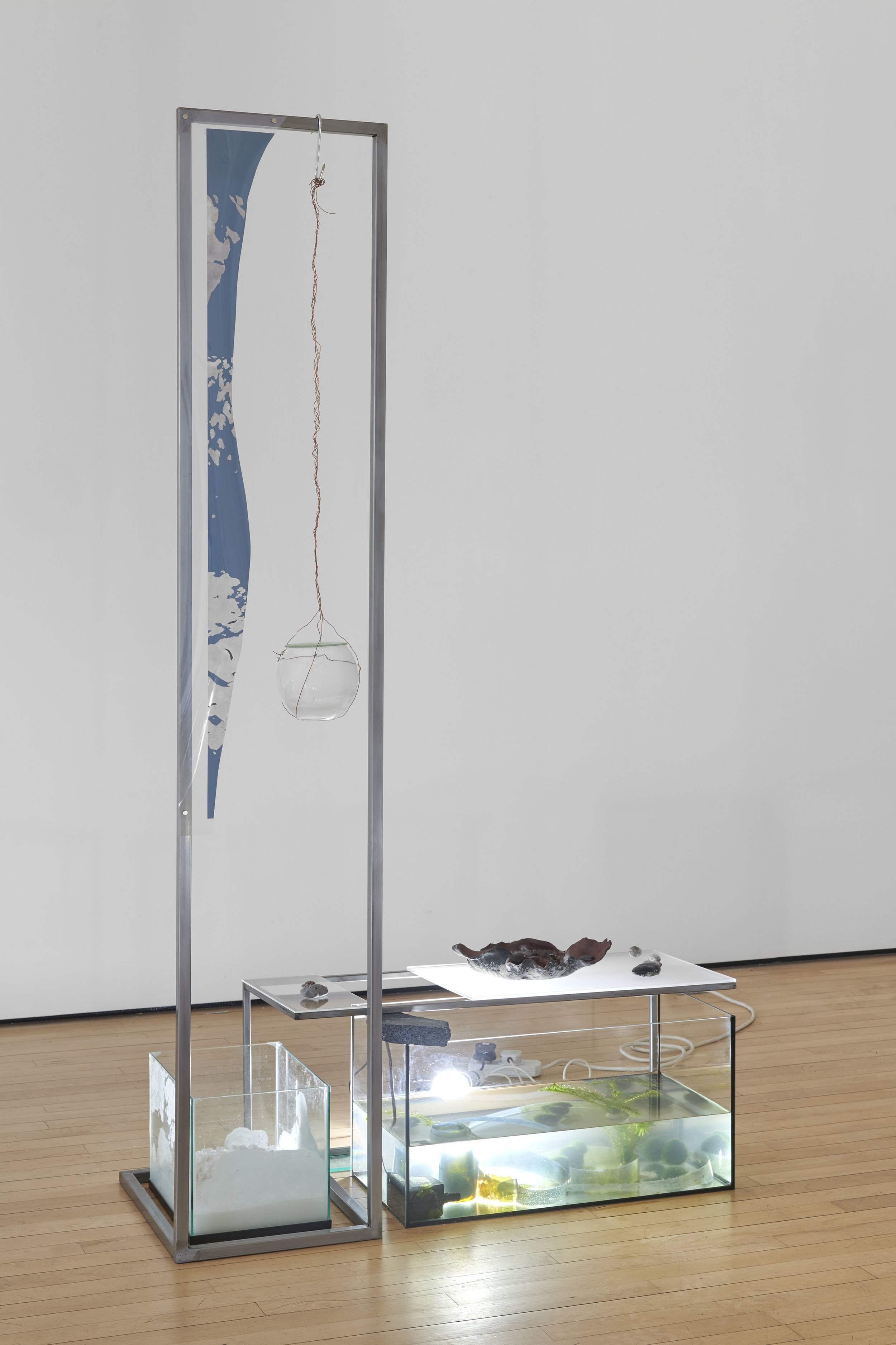
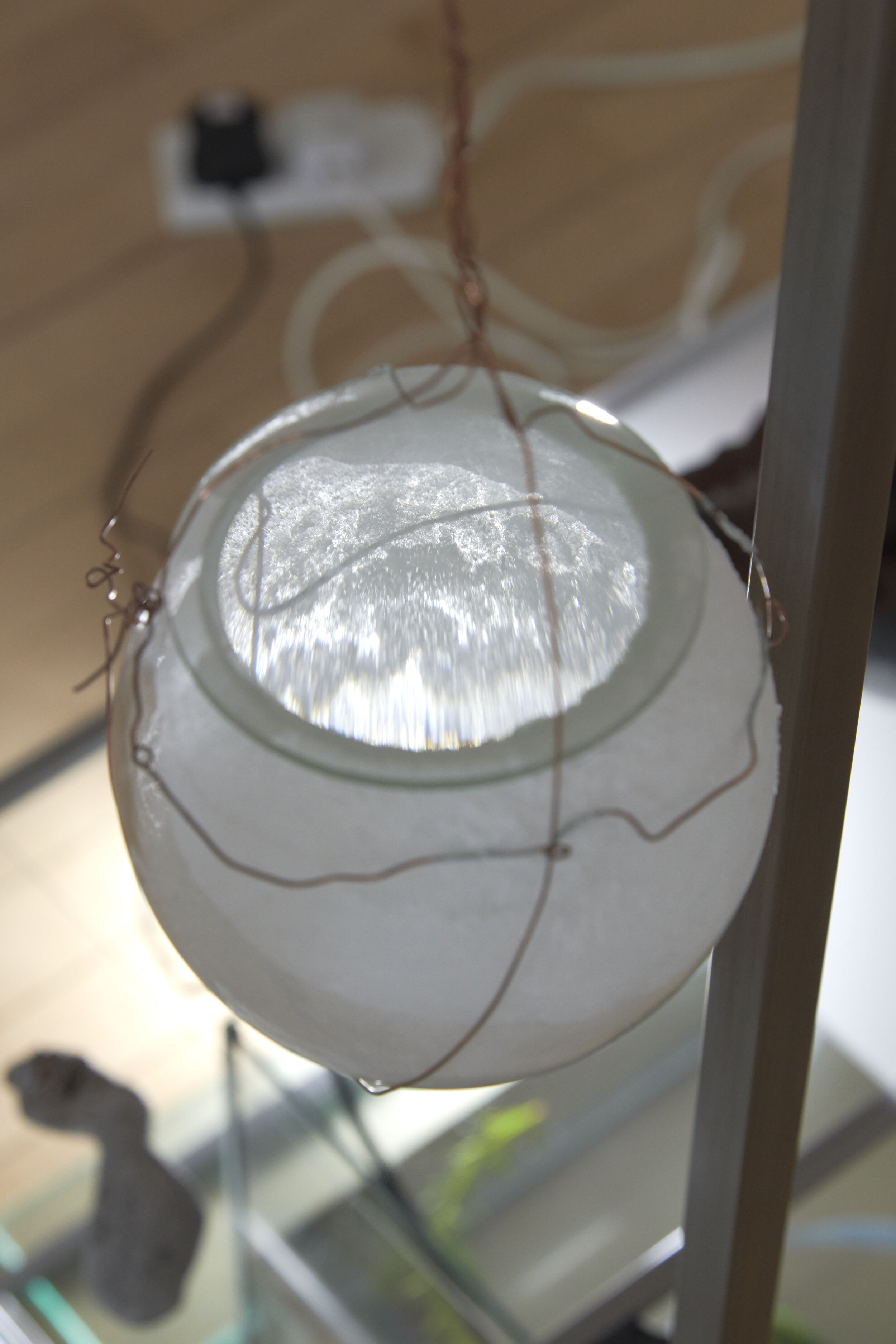
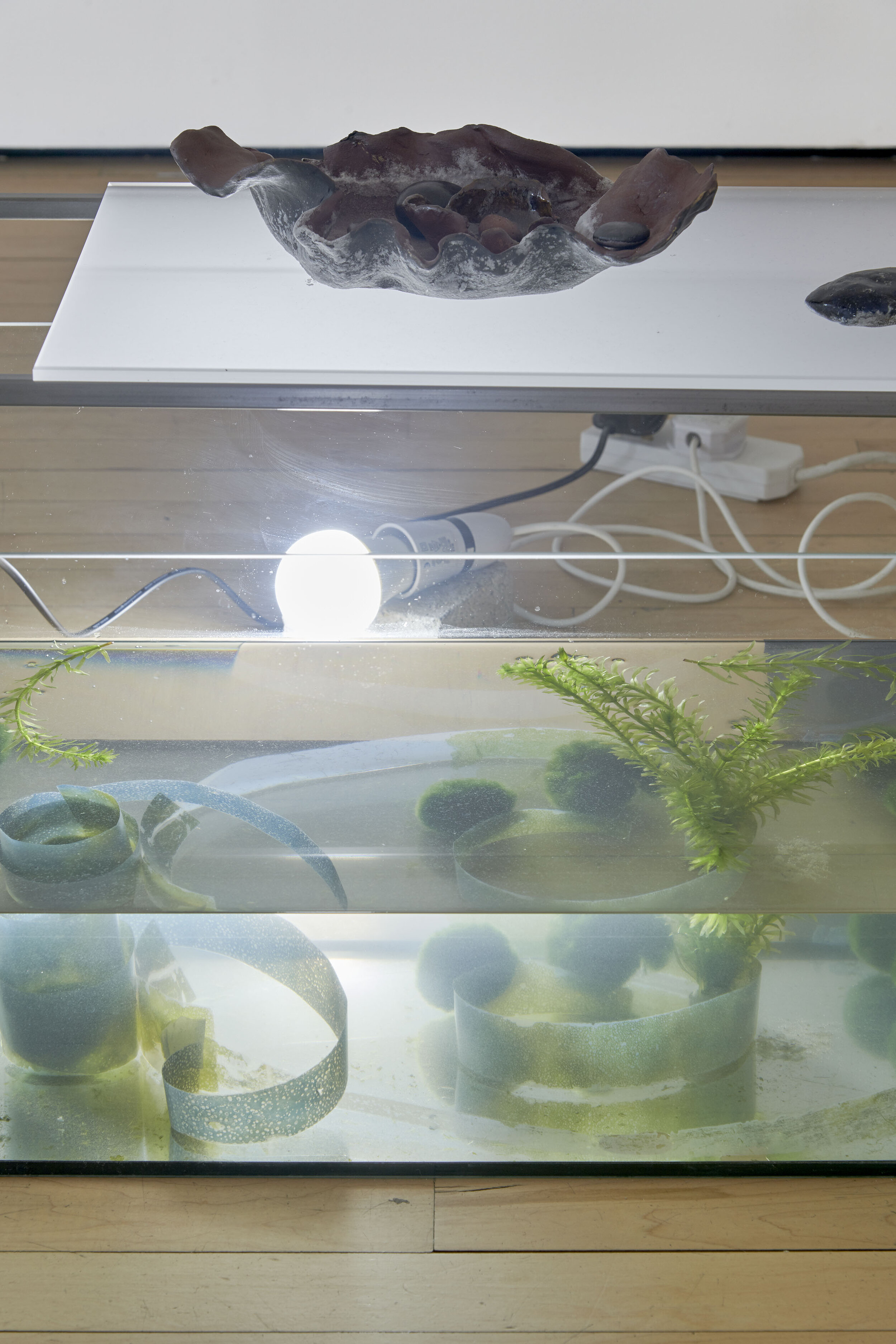

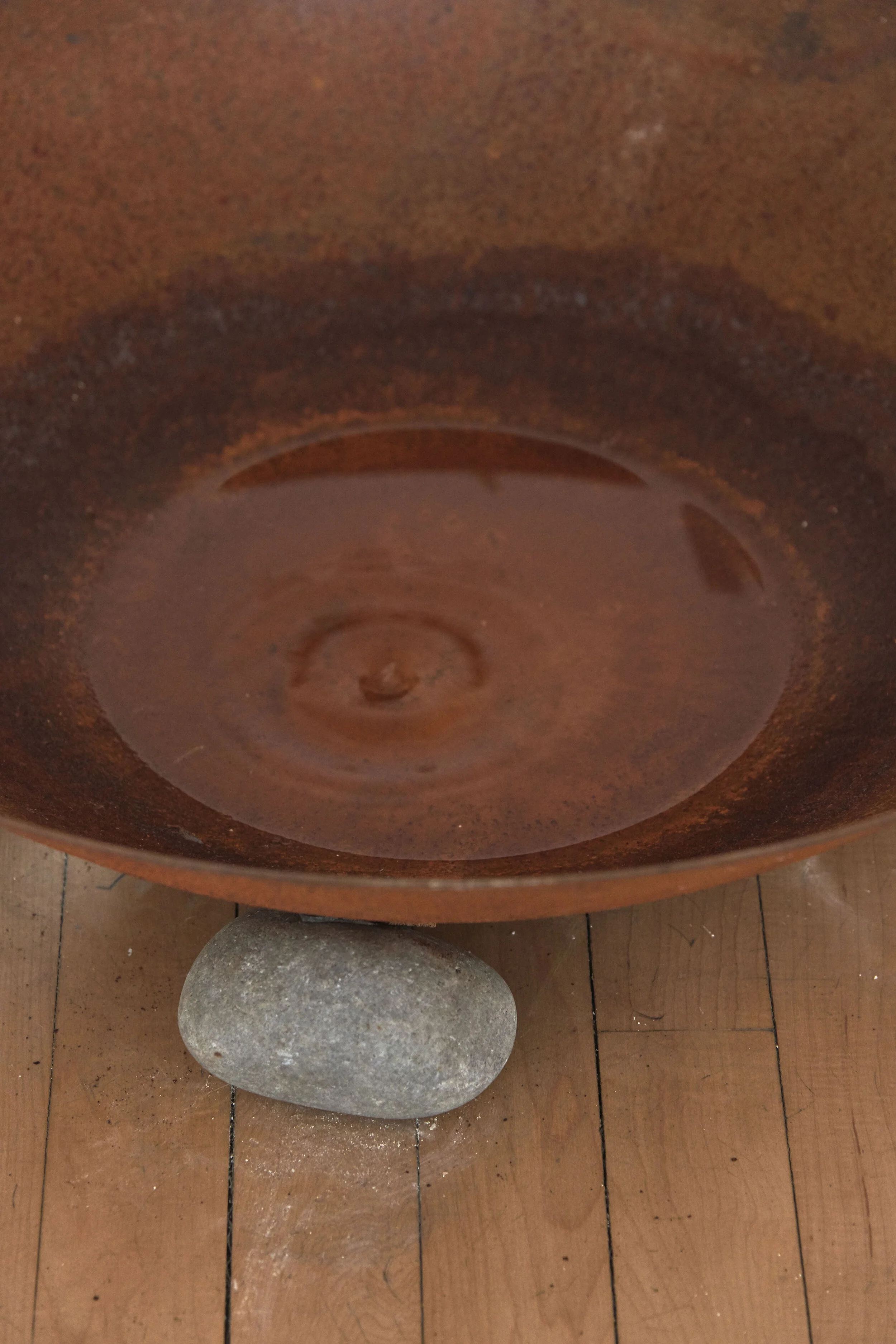
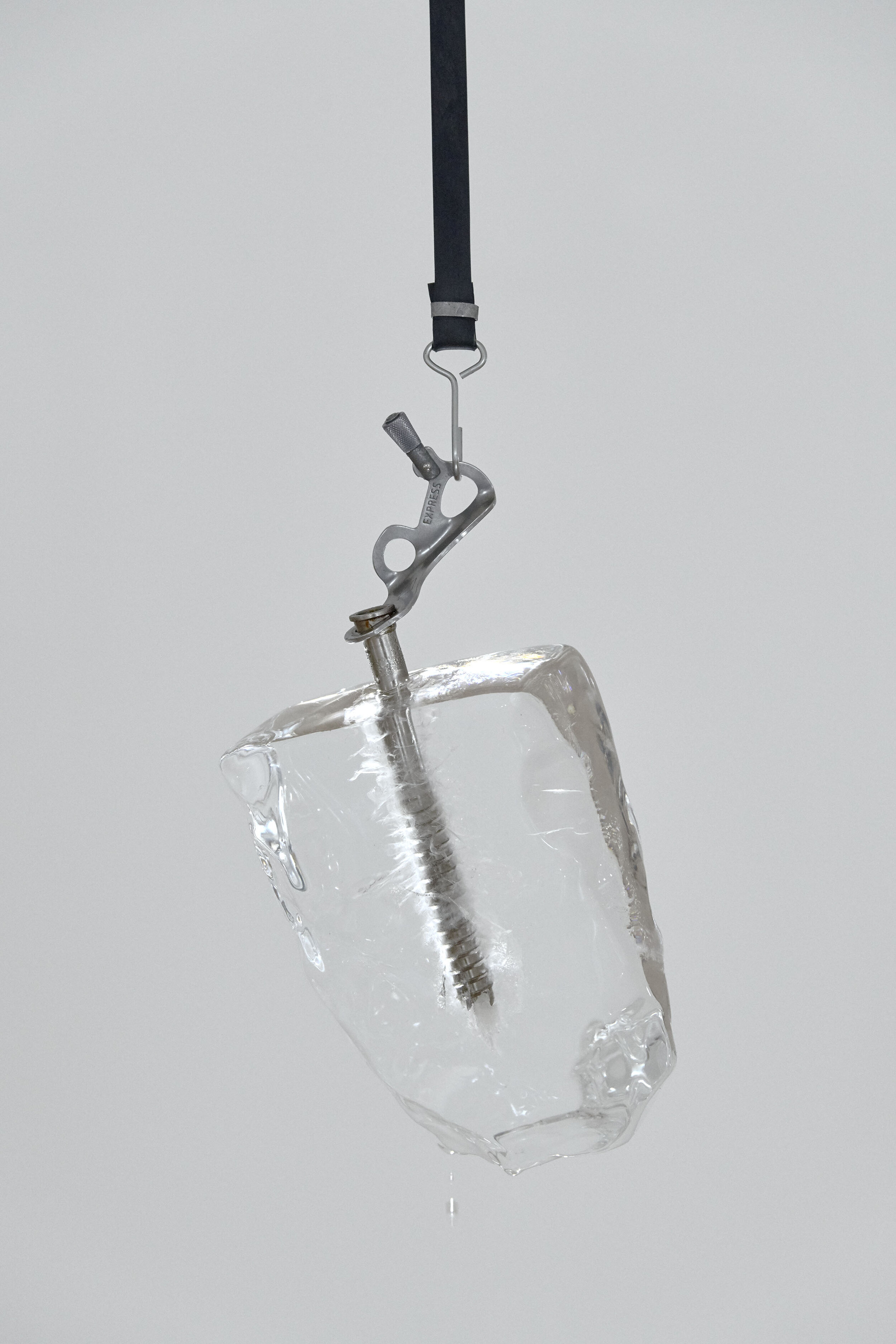
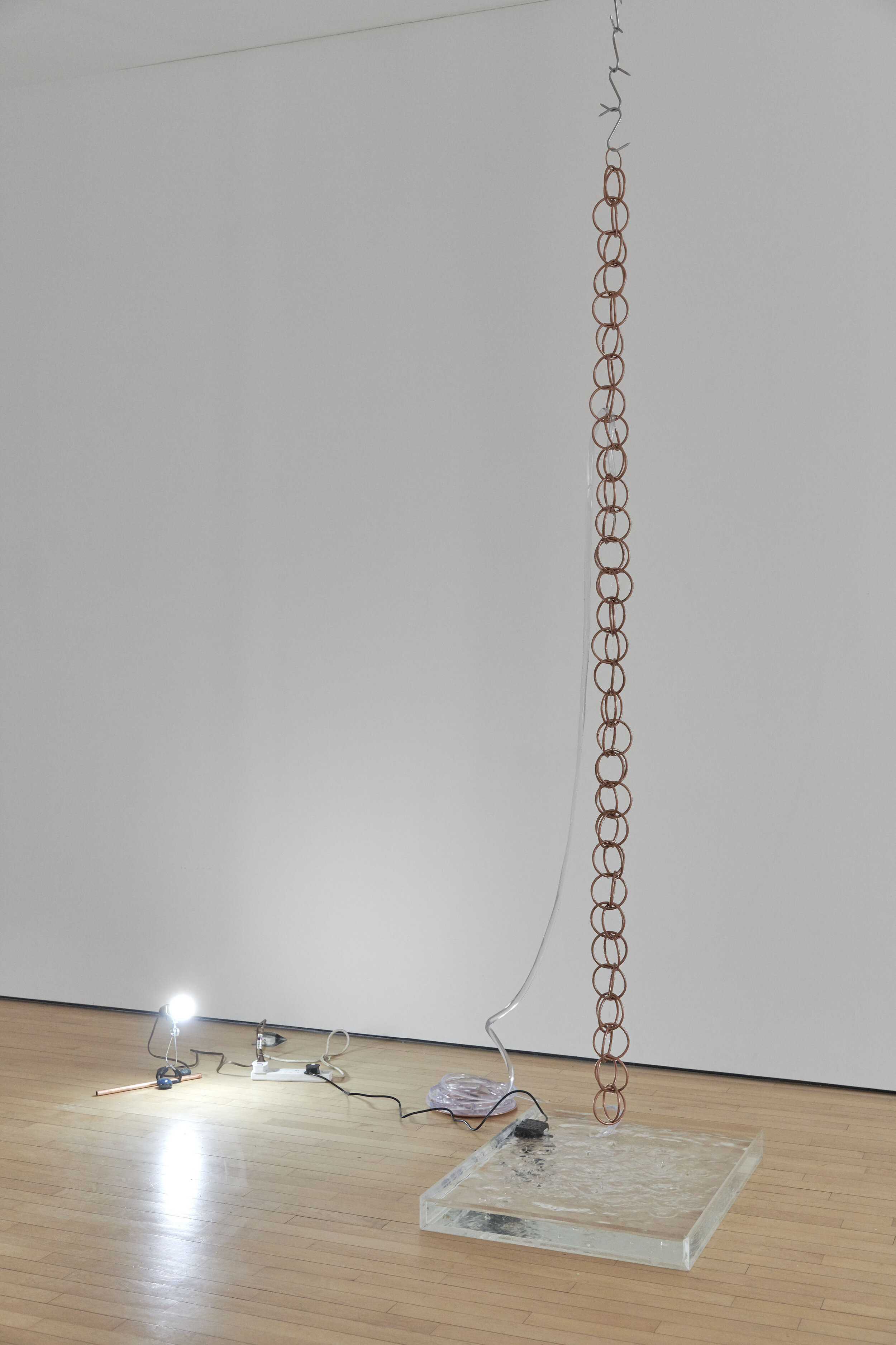
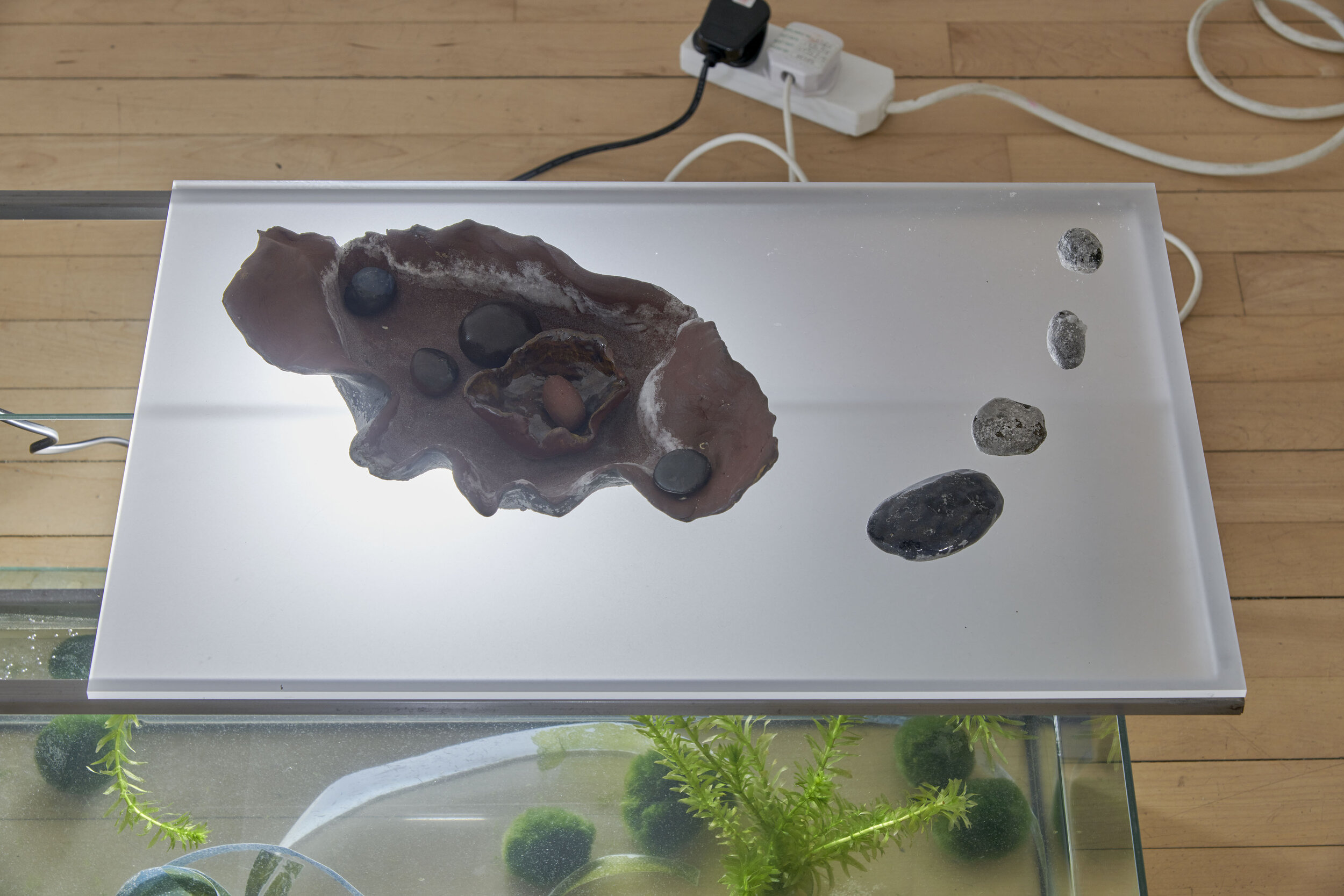
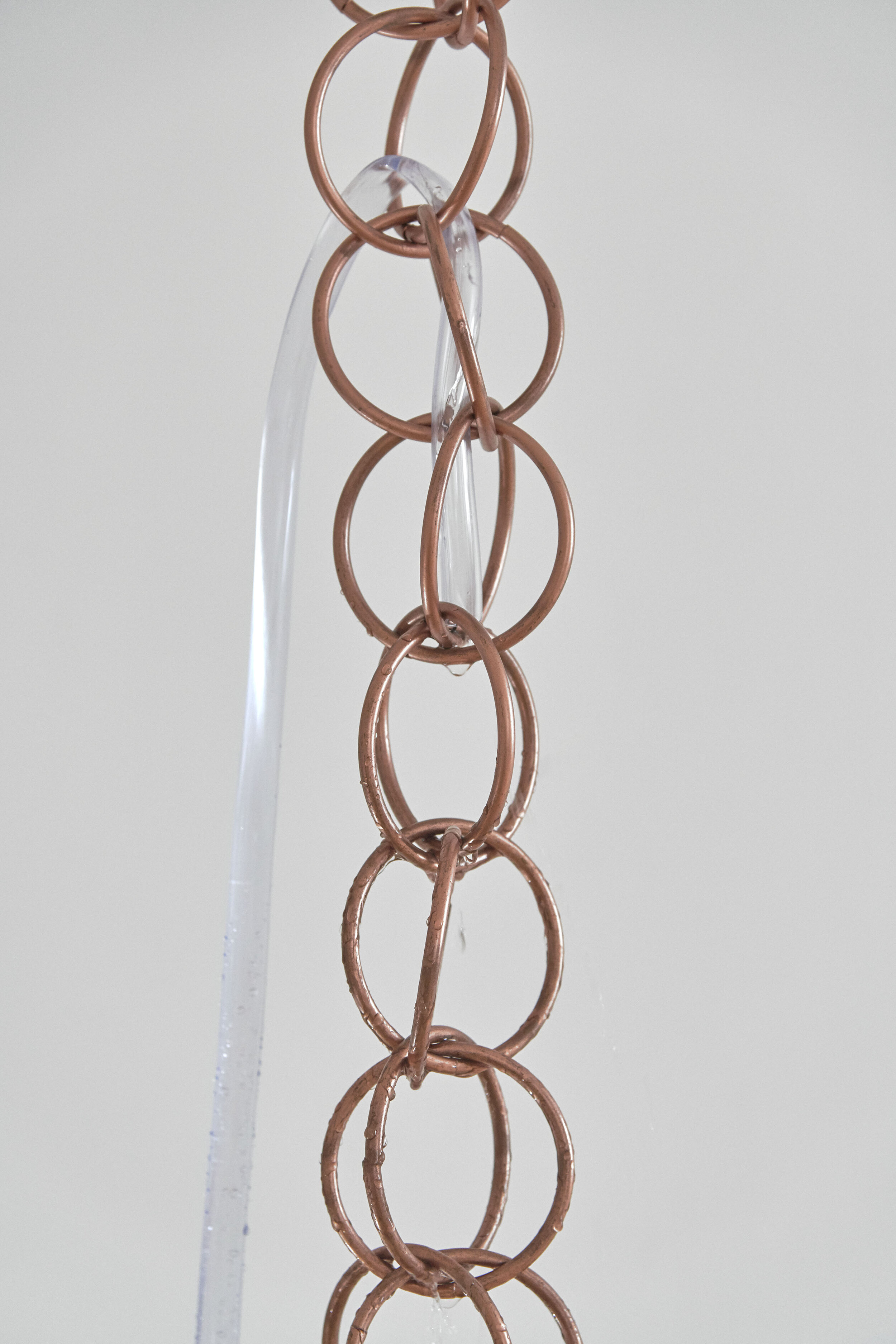
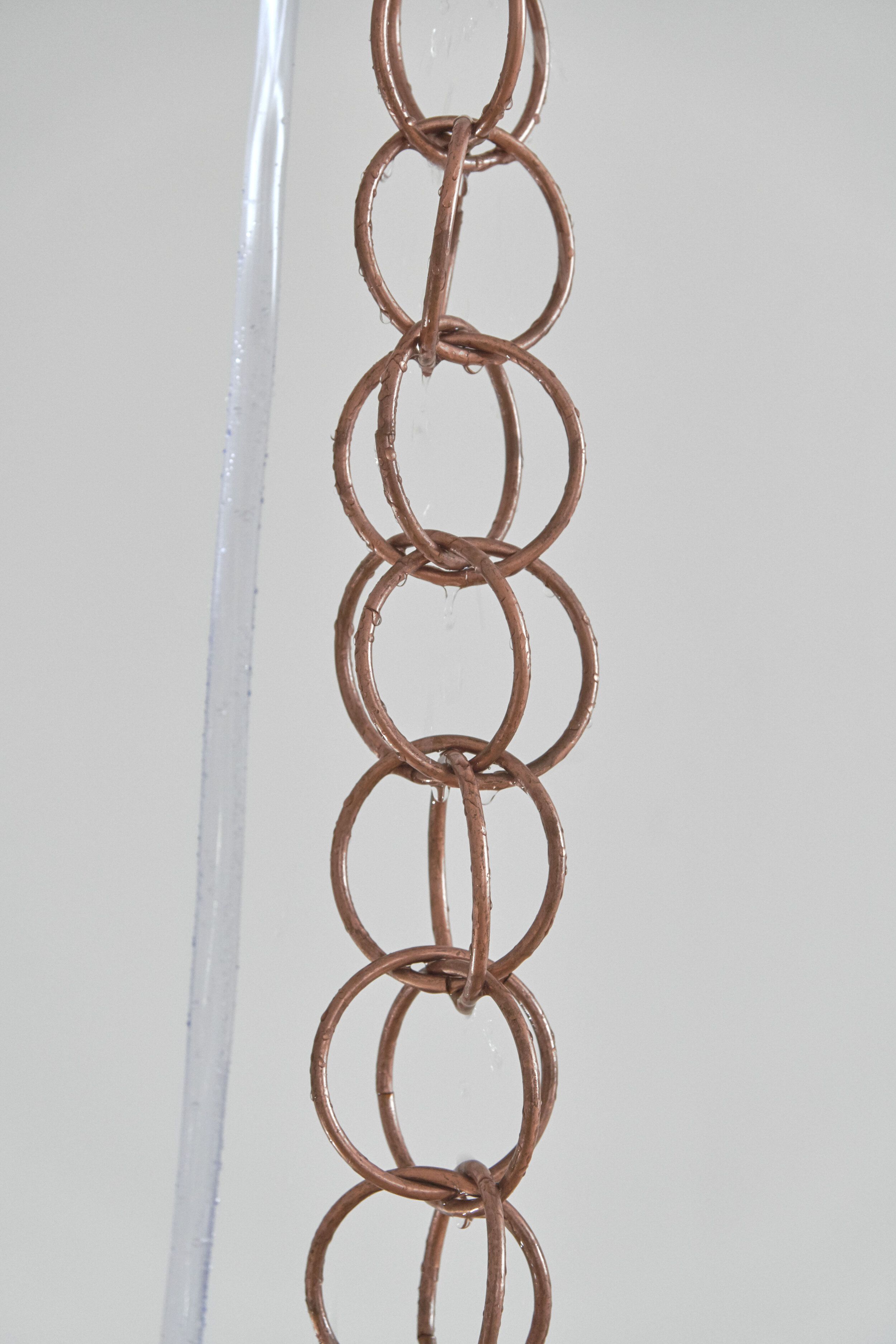
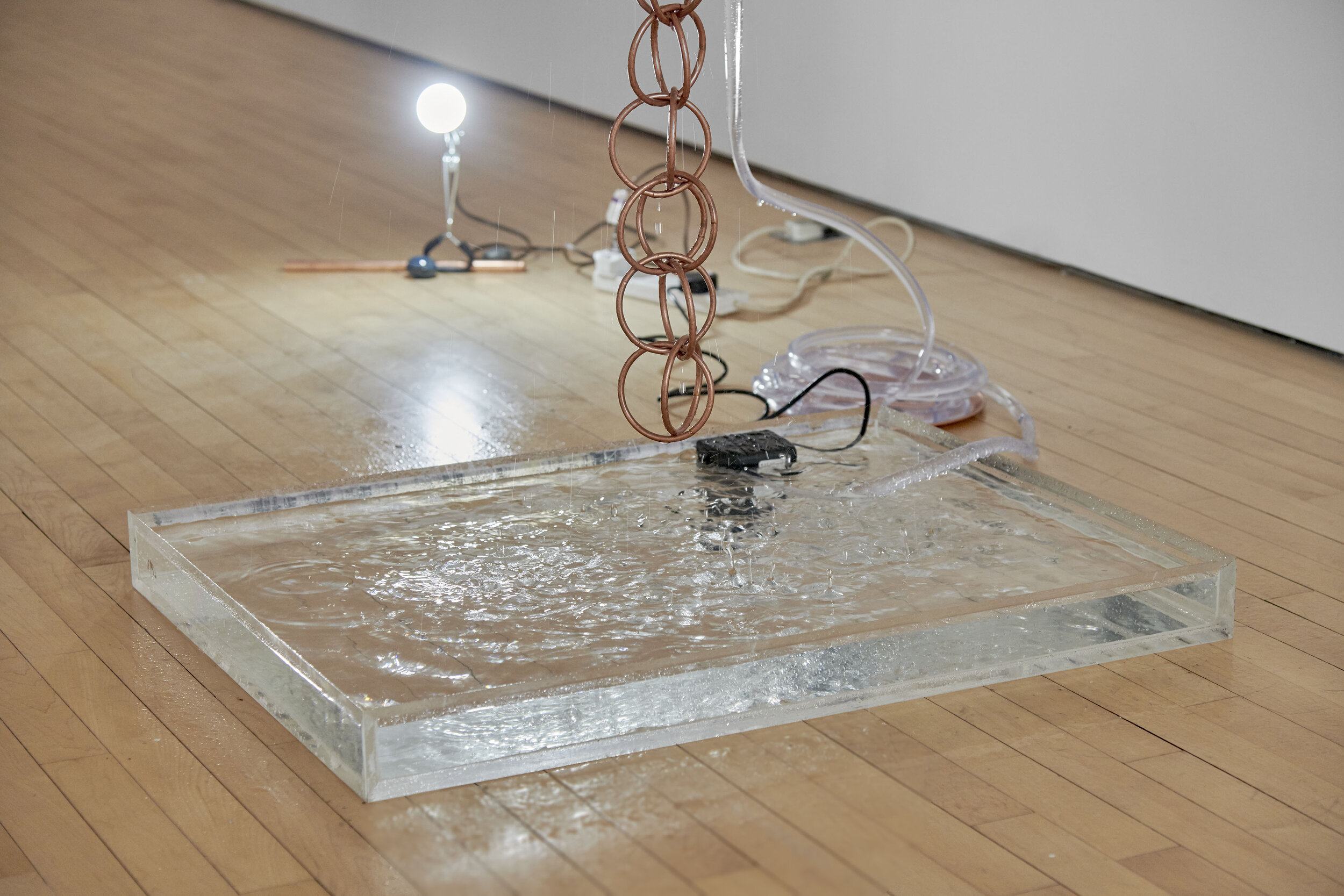
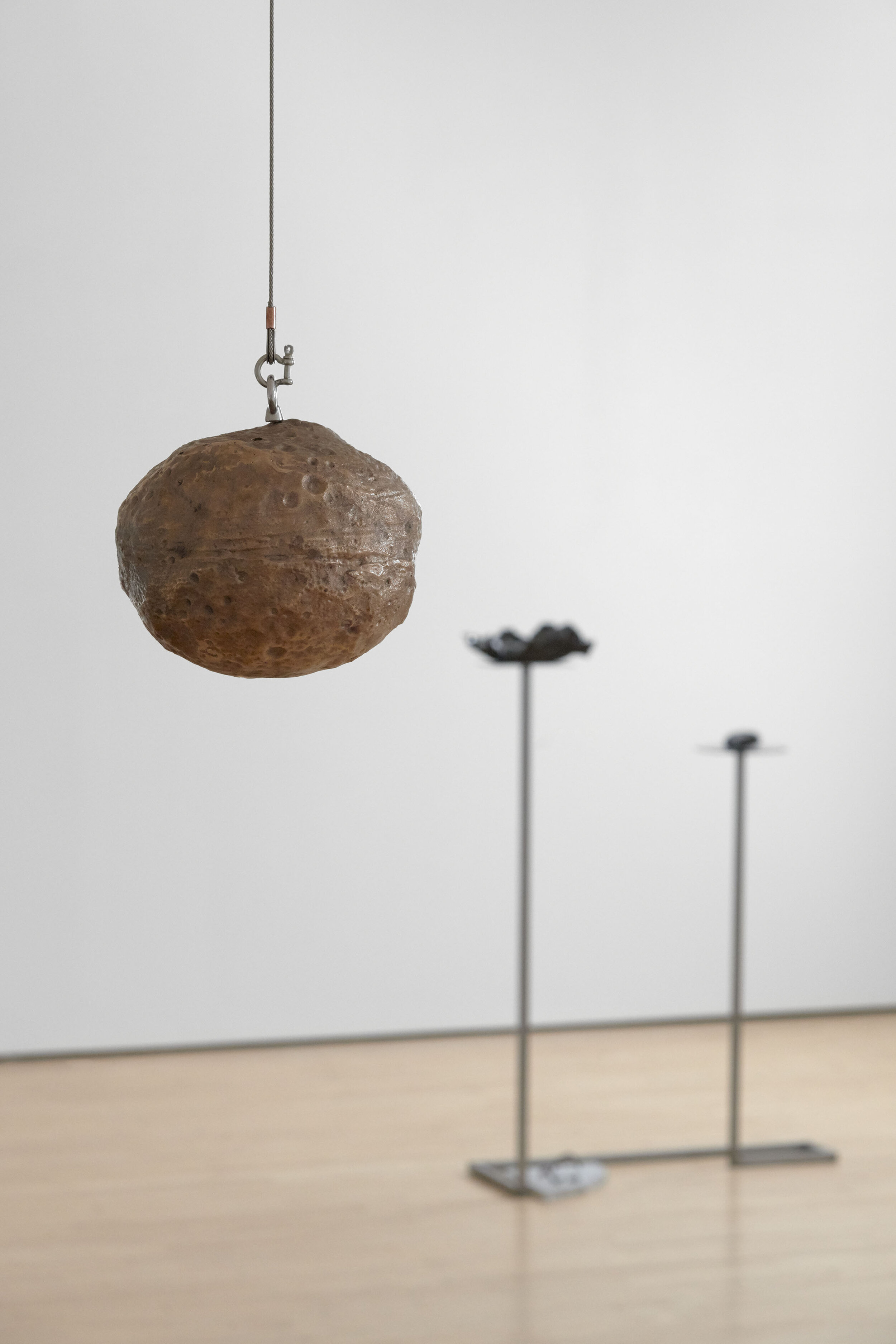
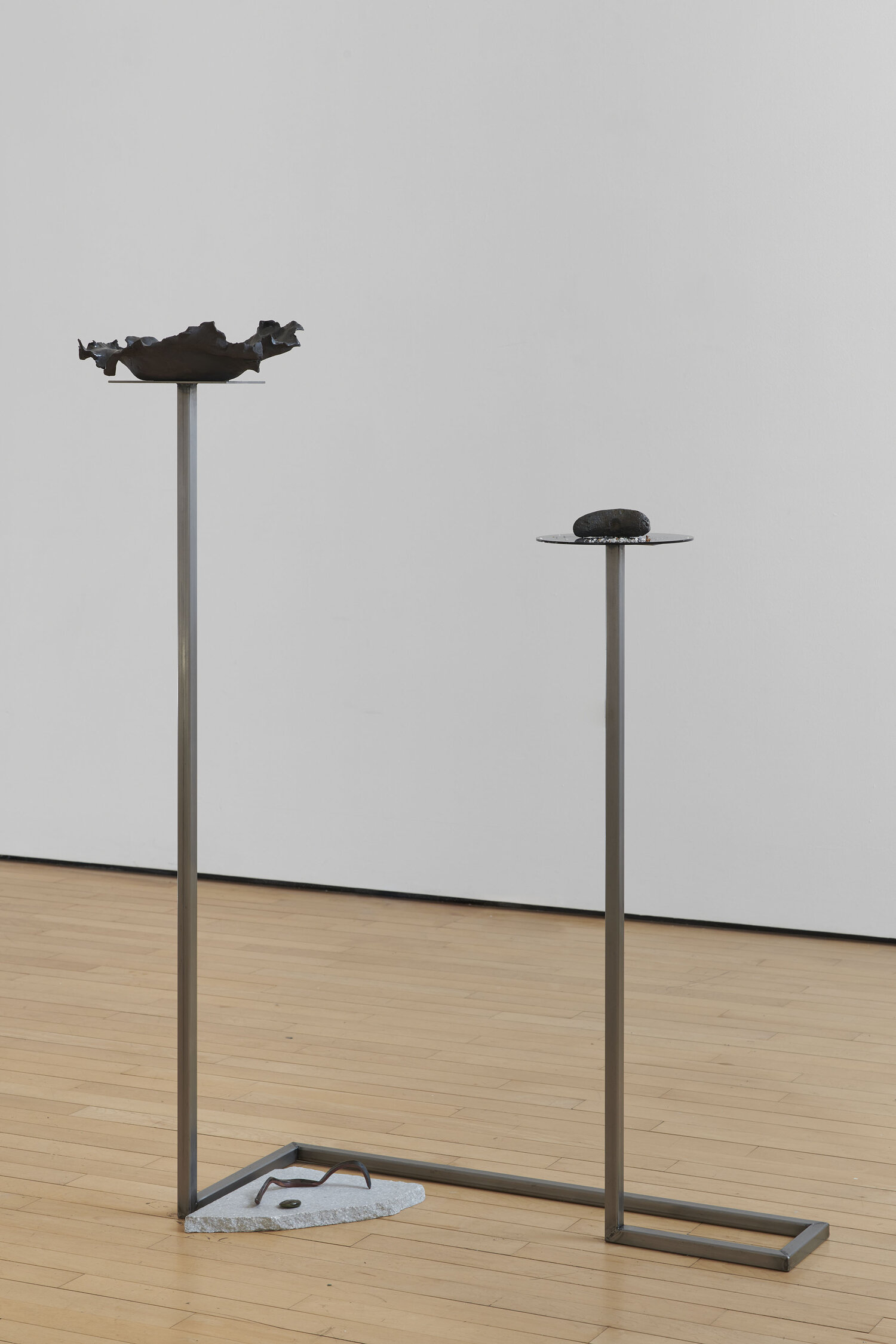
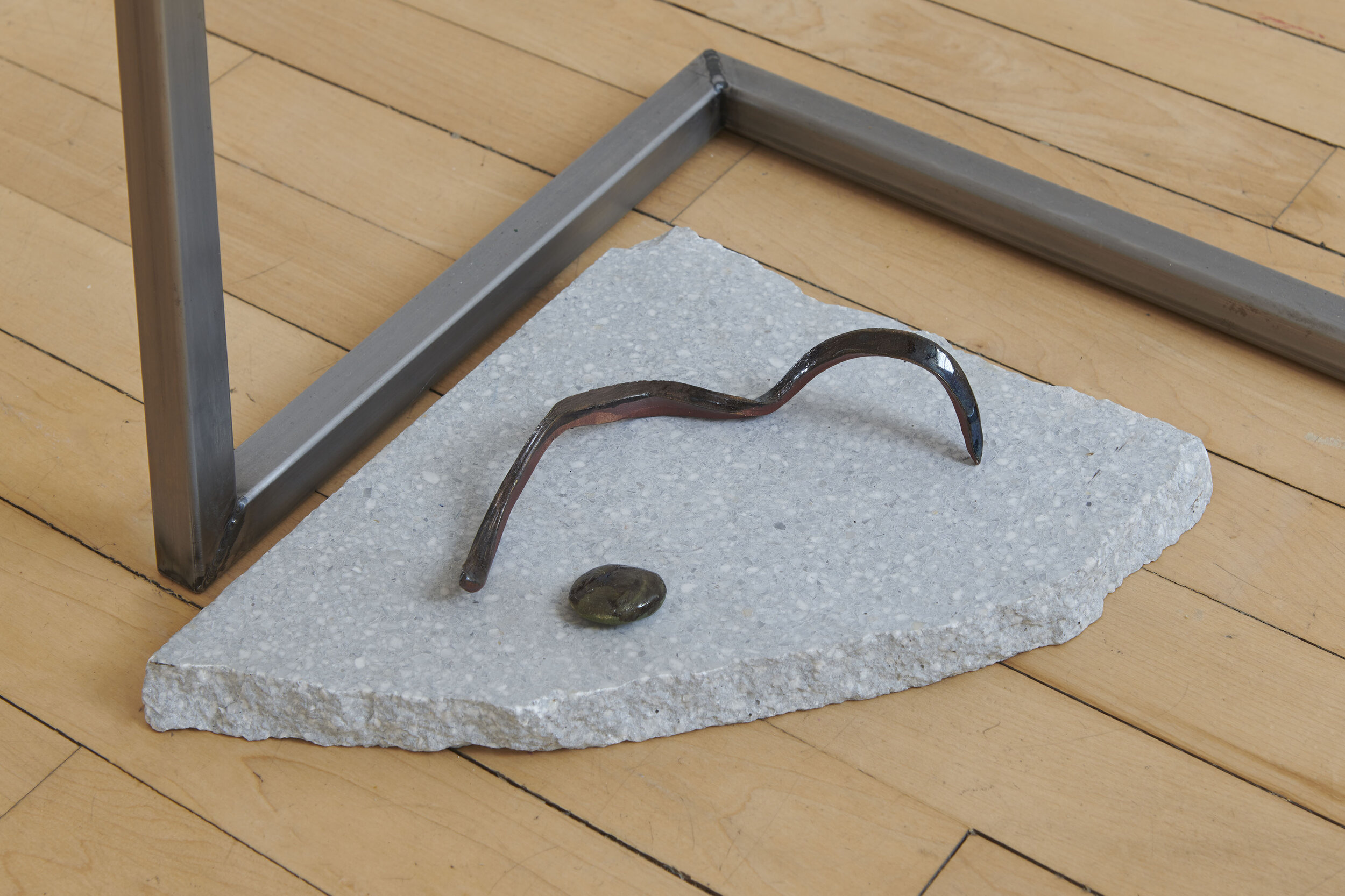
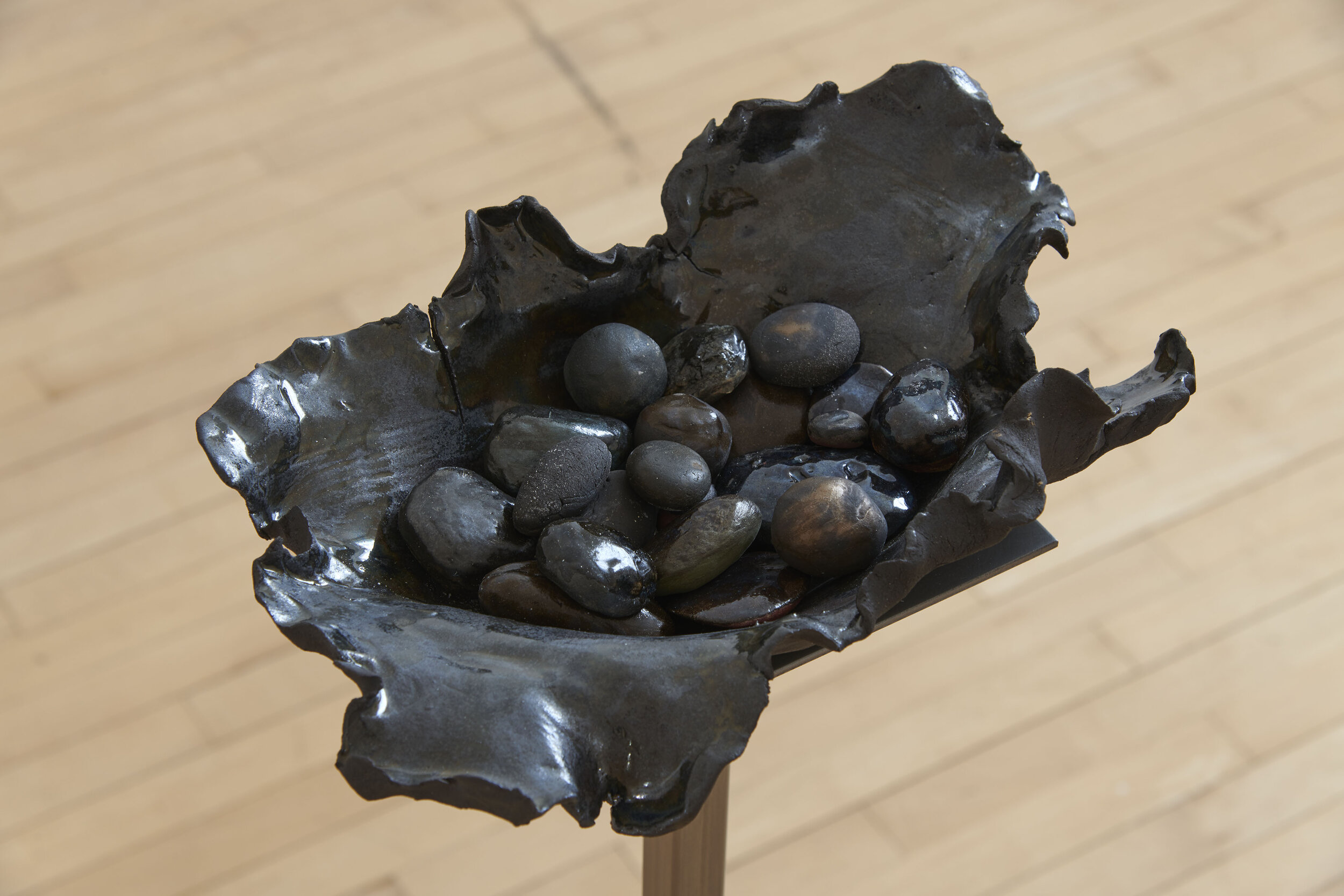
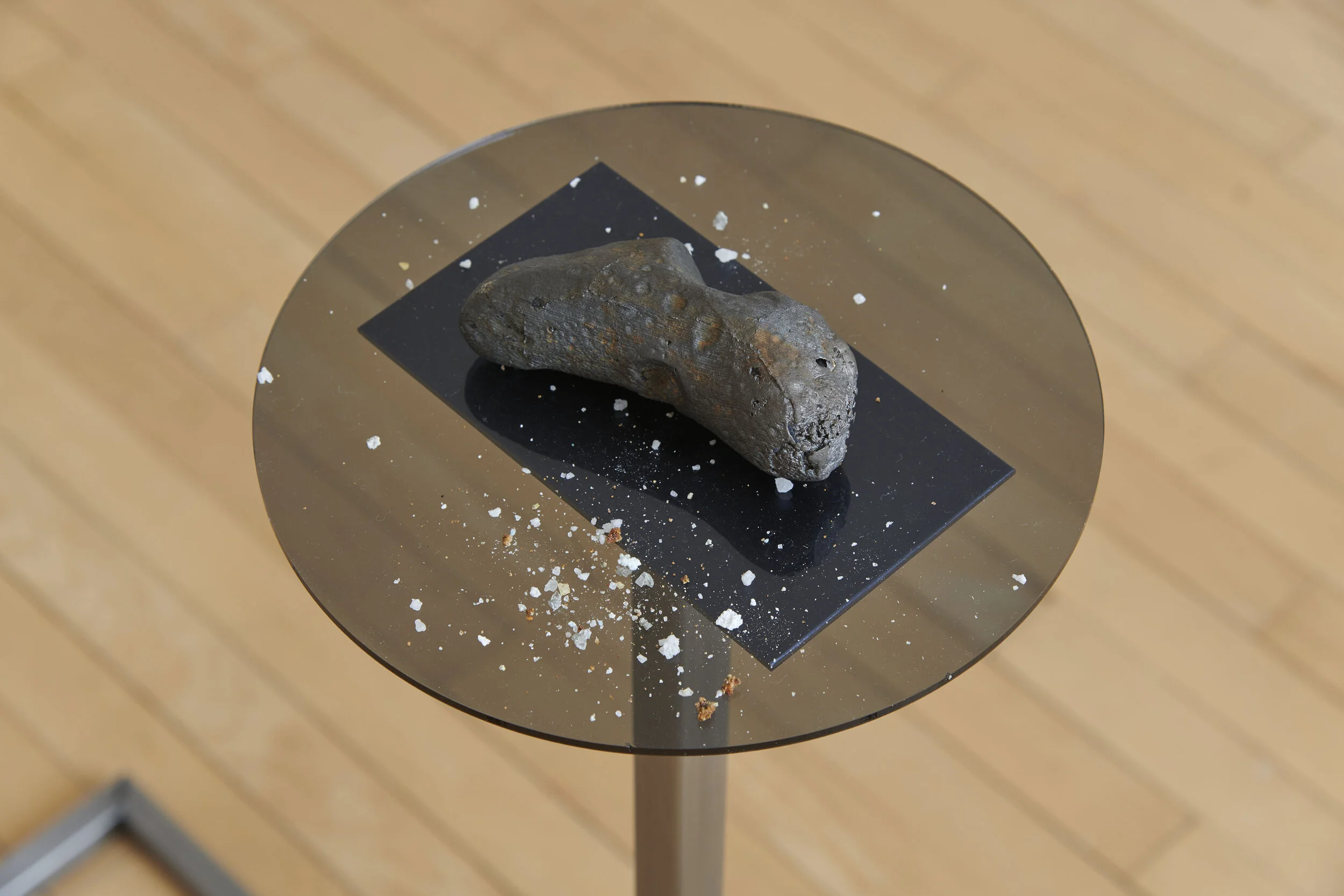
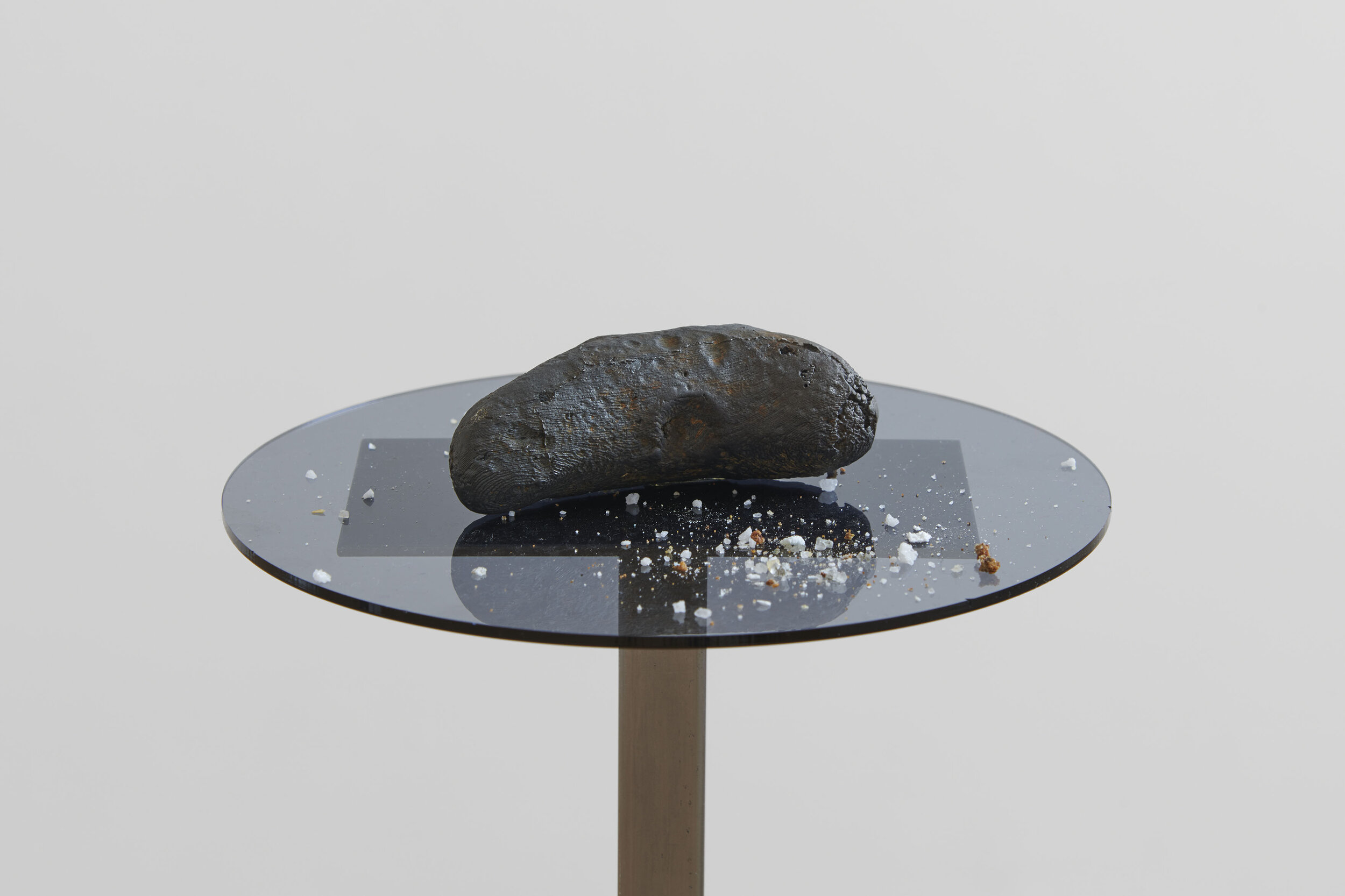
Your Custom Text Here
Hannah Rowan, Prima Materia, 2019.
10 May - 15 June
solo exhibition at Assembly Point, London. supported by Arts Council England.
Prima Materia is an installation of interconnecting systems that speculate on the origins and many shifting states of water.
The exhibition takes its name from a formless primeval substance, regarded in alchemy as the first matter and the ubiquitous starting material of the universe. This new body of work will continue the artist’s exploration into the relationships between fluidity, ephemerality, geology and technology.
Constructed ecologies will circulate and weave together, time will flow through materials in various states of becoming and entropy; ice melting, water flowing, iron rusting and salt crystals forming. Cosmological and organic entities will move through material states and multiple timescales.
Sixty to ninety percent of your bodily matter is composed of water. Water, in this sense, is an entity, individualized as that relatively stable thing you call your body. But water has other logics, other patternings and means of buoying our earthly world, too. Not least, water is a conduit and mode of connection. Just as oceanic currents convey the sun’s warmth, schools of fish, and islands of degraded plastic from one planetary sea to another, our watery bodies serve as material media. In an evolutionary sense, living bodies are necessary for the proliferation of what scientists Mark and Dianna McMenamin call Hypersea, which arose when life moved out of marine waters and by necessity folded a watery habitat “back inside of itself.” Today, when you or I drink a glass of water, we amplify this Hypersea, as we sustain our existence through other “webs of physical intimacy and fluid exchange.” In this act of ingestion, we come into contact with all of our companion species that inhabit the watershed from which that water was drawn—book lice, swamp cabbage, freshwater mussel. But we connect with the sedimentation tanks, and rapid-mix flocculators that make that water drinkable, and the reservoir, and the rainclouds, too. Hypersea extends to include not only terrestrial flora and fauna, but also technological, meteorological, and geophysical bodies of water.
Astrida Neimanis Hydrofeminism: Or, On Becoming a Body of Water
Hannah Rowan’s work explores an ephemeral chain of events unfolding through material states: transformation, growth, reaction, adaptation, evolution and degradation. Both her work and her studio rarely look the same on any given day. The artist works on assemblages by adding together various elements and then returning the next day – extracting or refining details, building up and taking away or vice versa. In many cases, she works with the limits of her own body – how high she can reach, how much she can lift or stretch.
With the noteworthy interconnections between her elemental and ritualistic materials, these being both inanimate and living organisms, Rowan’s work reflects upon an essence of time in which the relationships between different materials act upon or support each other. As she explains, “I am interested in working with a wide array of materials and forming intricate connections and assemblages with these elements through a fluid process. Often water plays a role in relation to the material states of these components”.
Rowan finds deep relationships between elements that are often considered inanimate, but in fact just operate on different timescales. Coupled with her stage-like approach, enhanced by lighting devices, magnifying glasses and kinetic utensils, it’s an entangled scenario that enacts the potential for change to occur, creating circumstances in which growth and entropy unravel. The works exude a subtle brutality and observed violence through their detached, clinical presentation. This forensic stance reflects a wider sense of anxiety with regard to global and cosmological events taking place in real time, such as climate change, the liquidity of data and the acceleration of technology. Taking a closer look at her work, one begins to find one’s own connections between time, matter, ecology and geology, as well as medicine, science-fiction, forensic science, alchemy and astrology.
Vanessa Murrell, co-founder of DATEAGLE ART
exhibition photography by Ben Westoby
Prima Materia Publication, please email to request a copy directly
Hannah Rowan, Prima Materia, 2019.
10 May - 15 June
solo exhibition at Assembly Point, London. supported by Arts Council England.
Prima Materia is an installation of interconnecting systems that speculate on the origins and many shifting states of water.
The exhibition takes its name from a formless primeval substance, regarded in alchemy as the first matter and the ubiquitous starting material of the universe. This new body of work will continue the artist’s exploration into the relationships between fluidity, ephemerality, geology and technology.
Constructed ecologies will circulate and weave together, time will flow through materials in various states of becoming and entropy; ice melting, water flowing, iron rusting and salt crystals forming. Cosmological and organic entities will move through material states and multiple timescales.
Sixty to ninety percent of your bodily matter is composed of water. Water, in this sense, is an entity, individualized as that relatively stable thing you call your body. But water has other logics, other patternings and means of buoying our earthly world, too. Not least, water is a conduit and mode of connection. Just as oceanic currents convey the sun’s warmth, schools of fish, and islands of degraded plastic from one planetary sea to another, our watery bodies serve as material media. In an evolutionary sense, living bodies are necessary for the proliferation of what scientists Mark and Dianna McMenamin call Hypersea, which arose when life moved out of marine waters and by necessity folded a watery habitat “back inside of itself.” Today, when you or I drink a glass of water, we amplify this Hypersea, as we sustain our existence through other “webs of physical intimacy and fluid exchange.” In this act of ingestion, we come into contact with all of our companion species that inhabit the watershed from which that water was drawn—book lice, swamp cabbage, freshwater mussel. But we connect with the sedimentation tanks, and rapid-mix flocculators that make that water drinkable, and the reservoir, and the rainclouds, too. Hypersea extends to include not only terrestrial flora and fauna, but also technological, meteorological, and geophysical bodies of water.
Astrida Neimanis Hydrofeminism: Or, On Becoming a Body of Water
Hannah Rowan’s work explores an ephemeral chain of events unfolding through material states: transformation, growth, reaction, adaptation, evolution and degradation. Both her work and her studio rarely look the same on any given day. The artist works on assemblages by adding together various elements and then returning the next day – extracting or refining details, building up and taking away or vice versa. In many cases, she works with the limits of her own body – how high she can reach, how much she can lift or stretch.
With the noteworthy interconnections between her elemental and ritualistic materials, these being both inanimate and living organisms, Rowan’s work reflects upon an essence of time in which the relationships between different materials act upon or support each other. As she explains, “I am interested in working with a wide array of materials and forming intricate connections and assemblages with these elements through a fluid process. Often water plays a role in relation to the material states of these components”.
Rowan finds deep relationships between elements that are often considered inanimate, but in fact just operate on different timescales. Coupled with her stage-like approach, enhanced by lighting devices, magnifying glasses and kinetic utensils, it’s an entangled scenario that enacts the potential for change to occur, creating circumstances in which growth and entropy unravel. The works exude a subtle brutality and observed violence through their detached, clinical presentation. This forensic stance reflects a wider sense of anxiety with regard to global and cosmological events taking place in real time, such as climate change, the liquidity of data and the acceleration of technology. Taking a closer look at her work, one begins to find one’s own connections between time, matter, ecology and geology, as well as medicine, science-fiction, forensic science, alchemy and astrology.
Vanessa Murrell, co-founder of DATEAGLE ART
exhibition photography by Ben Westoby
Prima Materia Publication, please email to request a copy directly